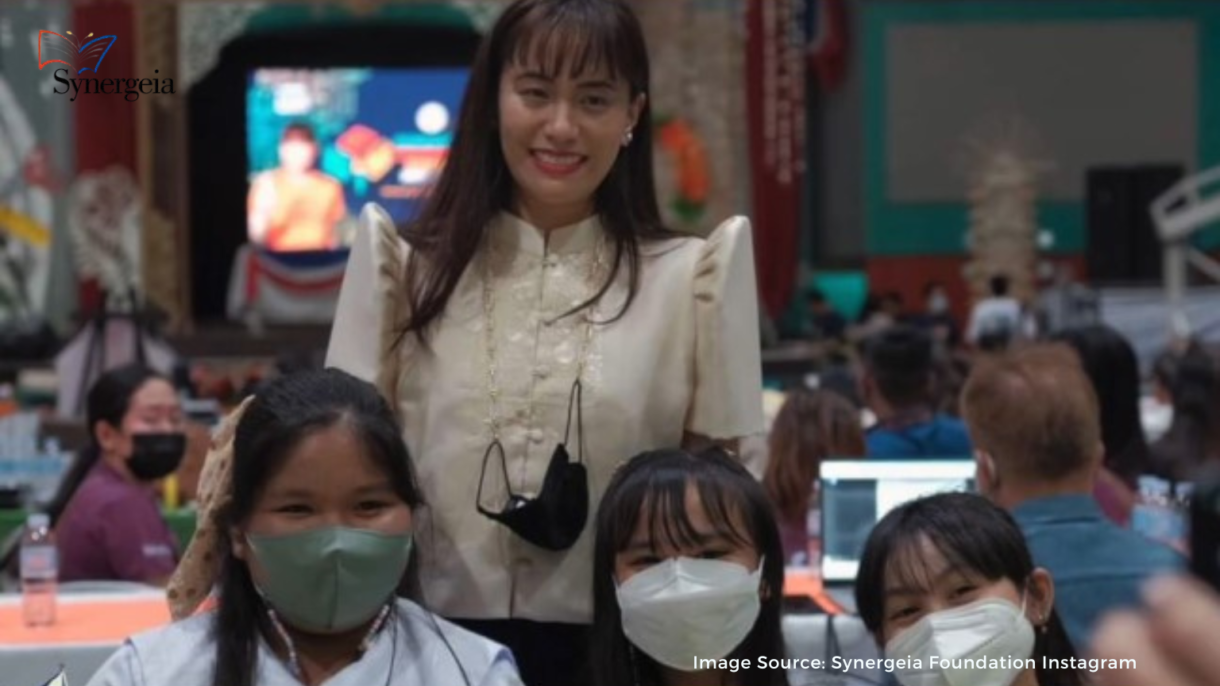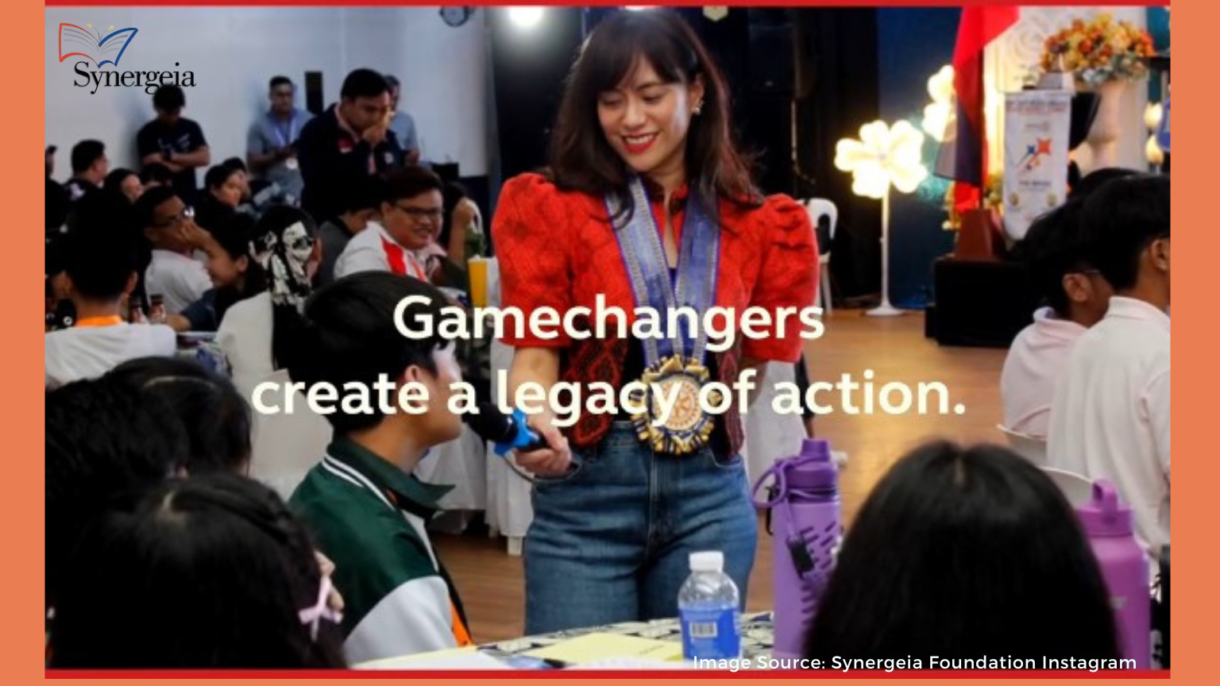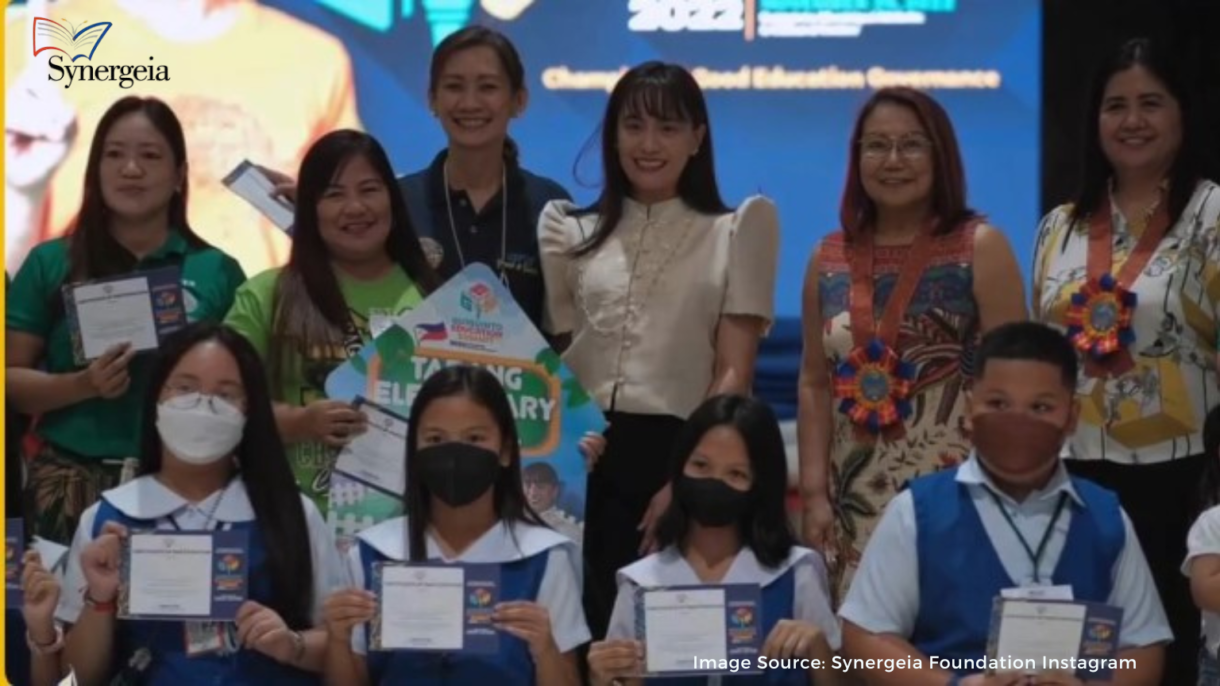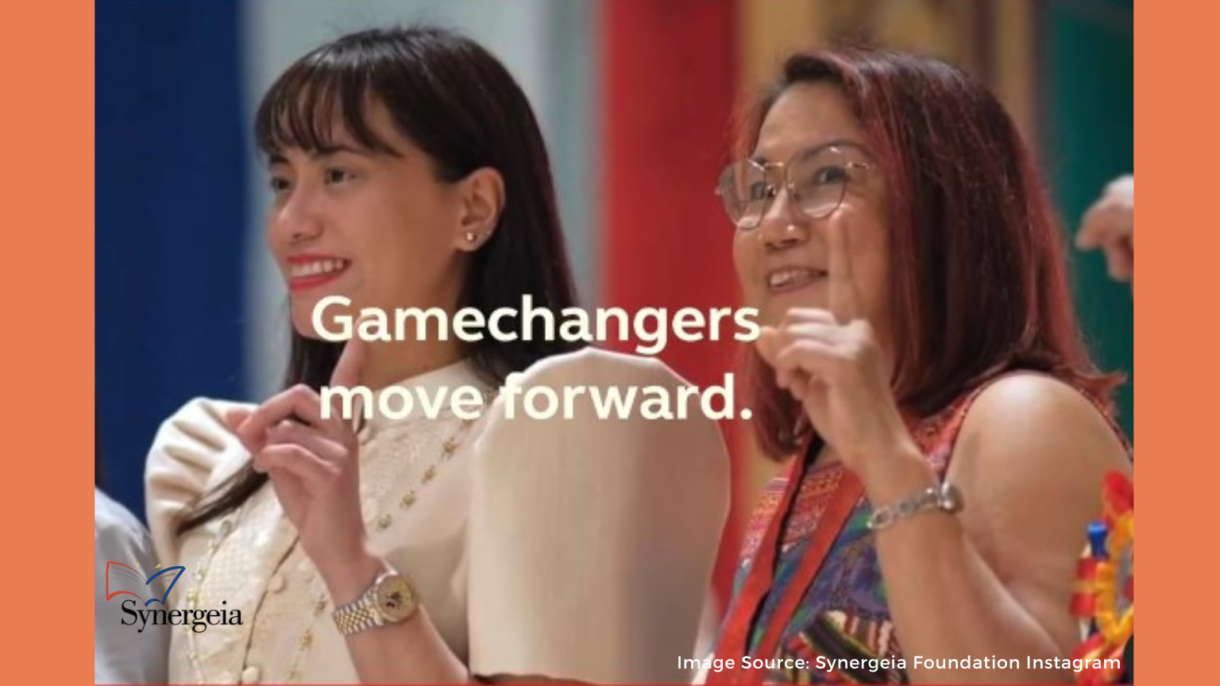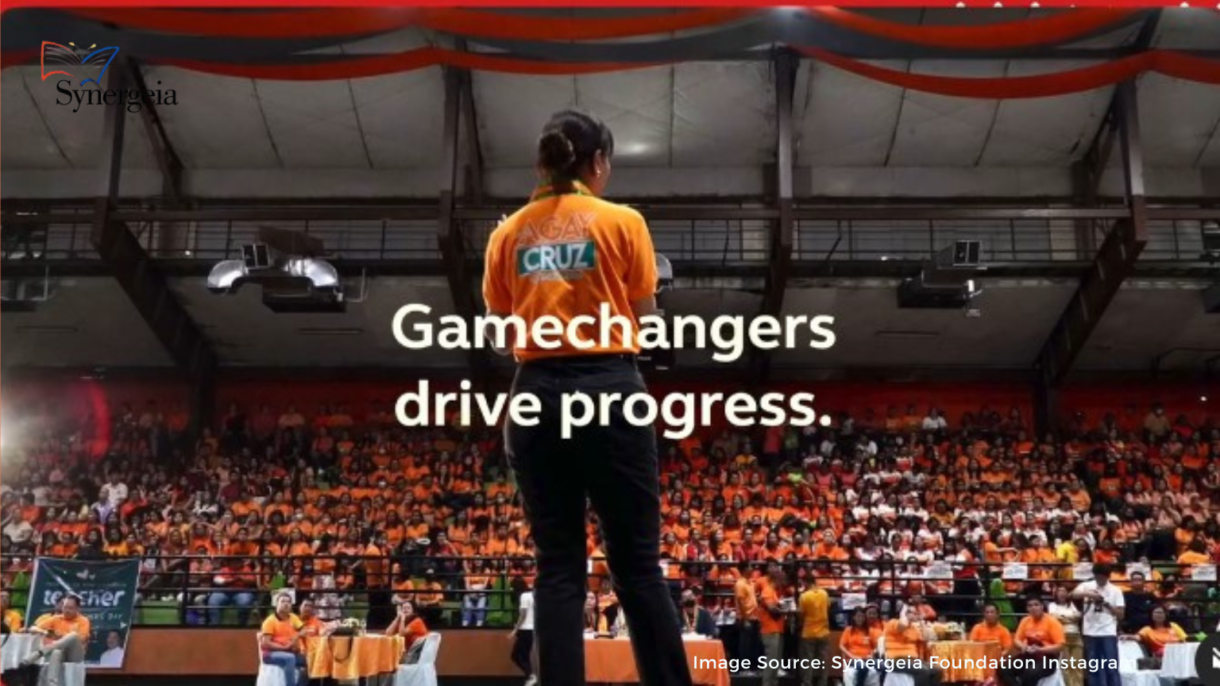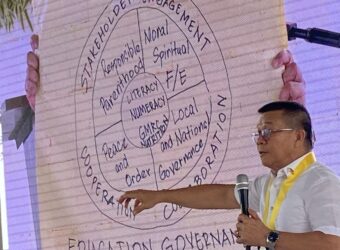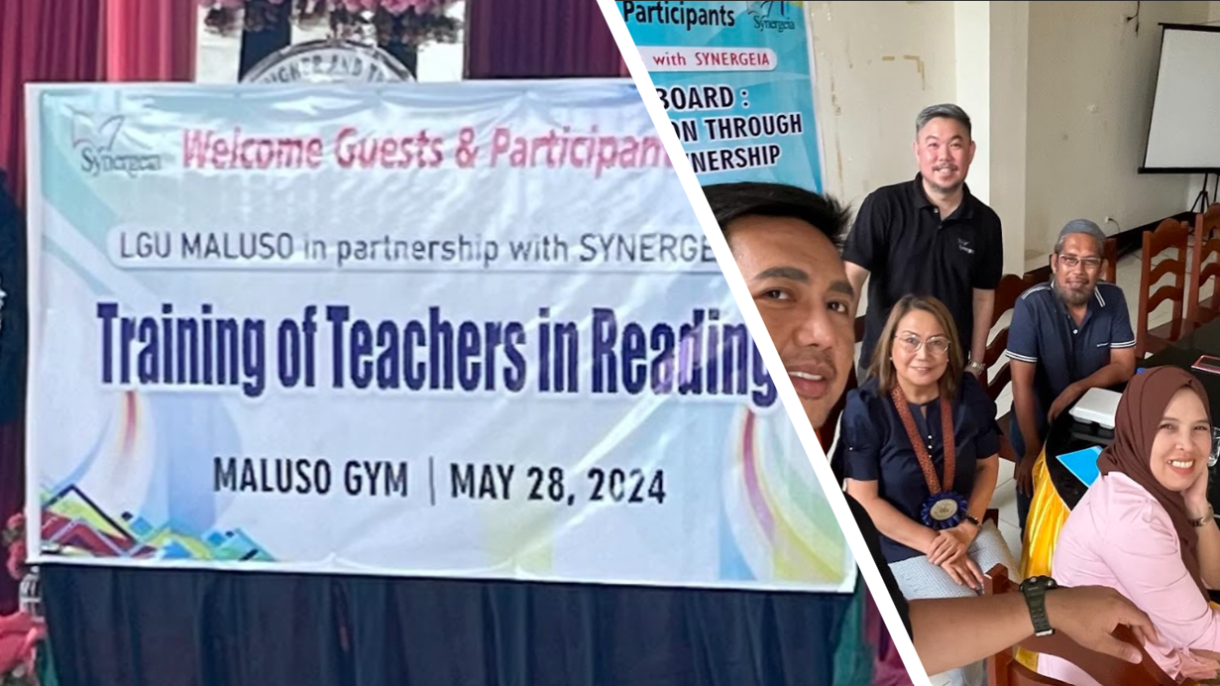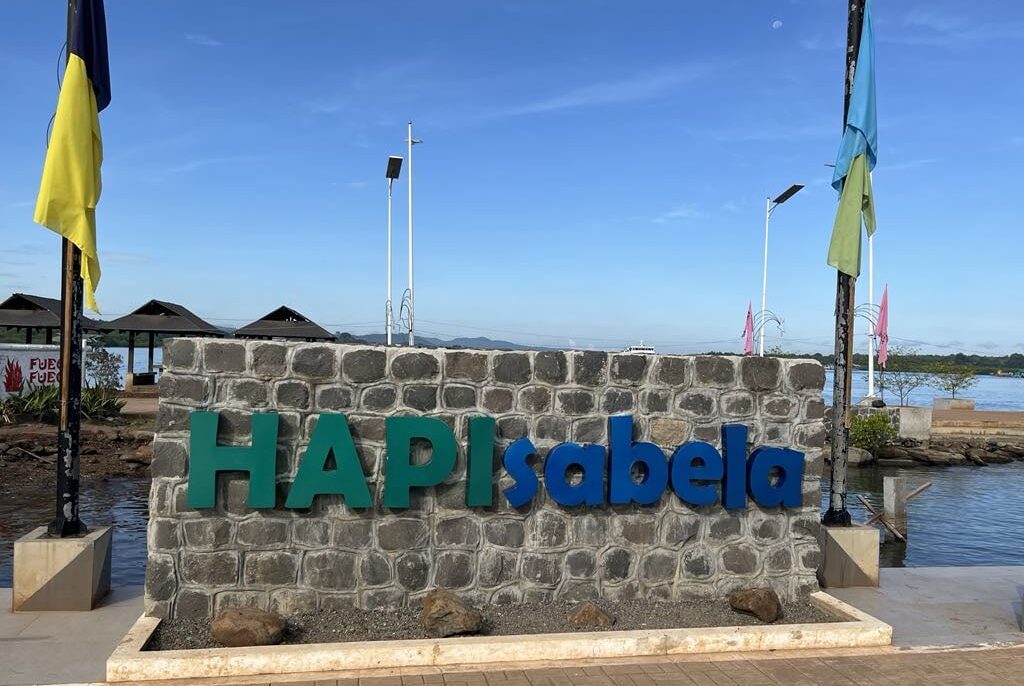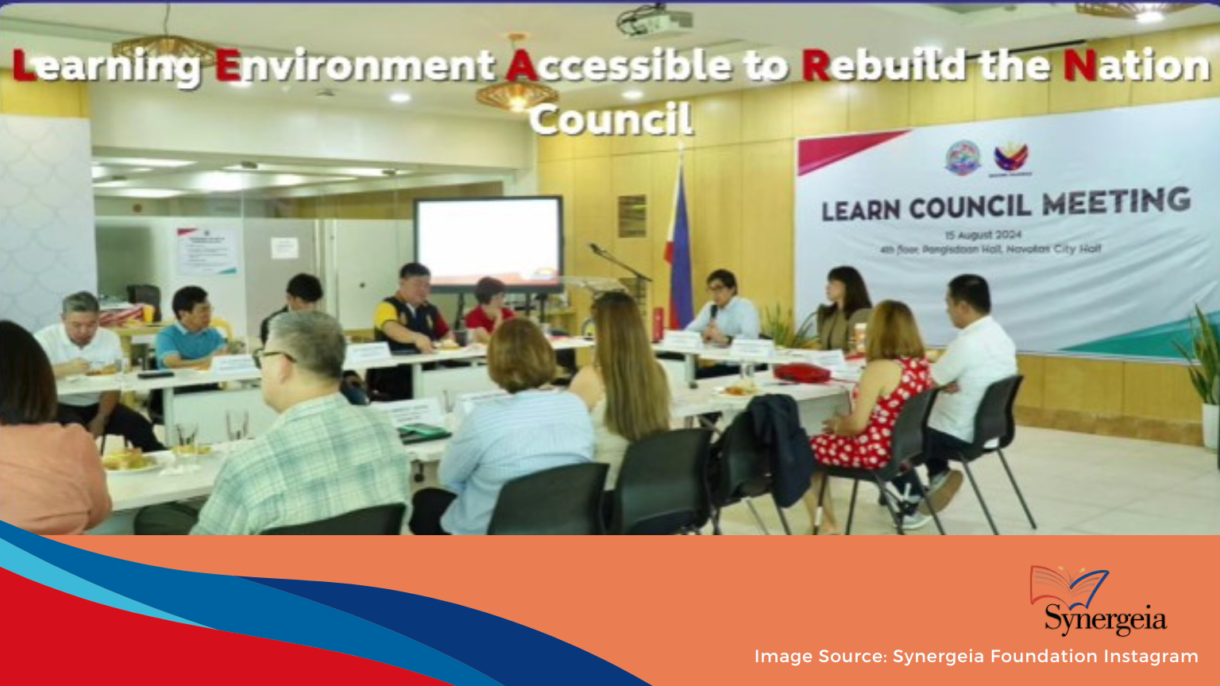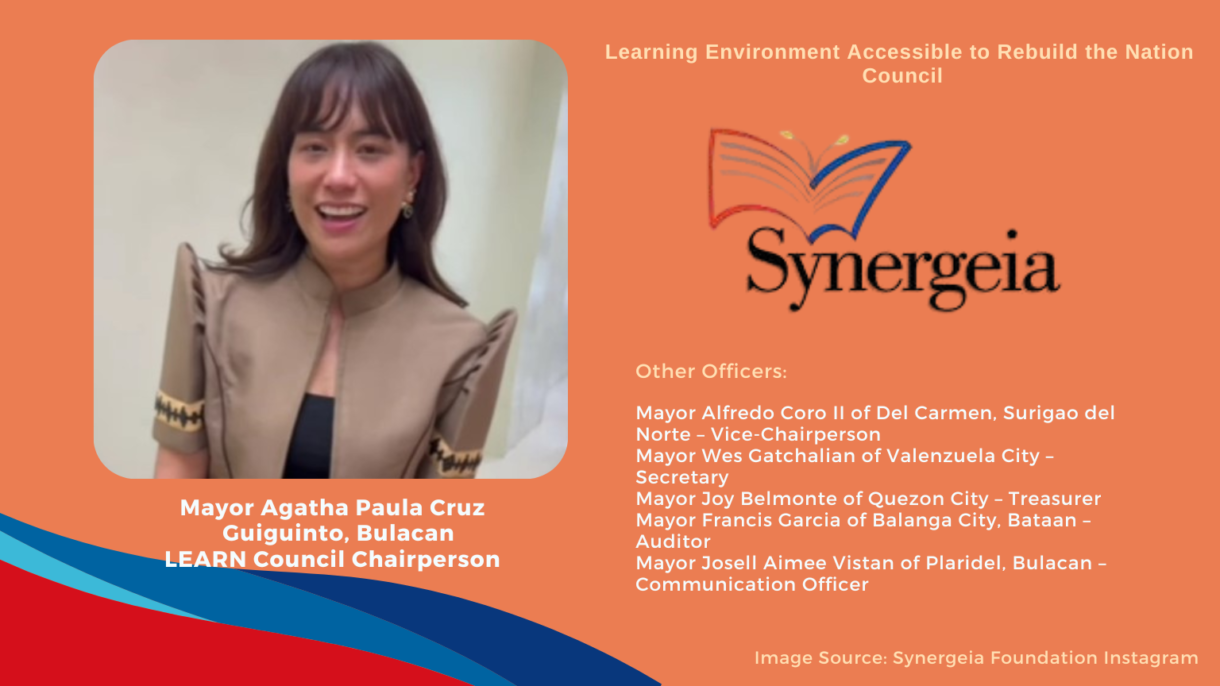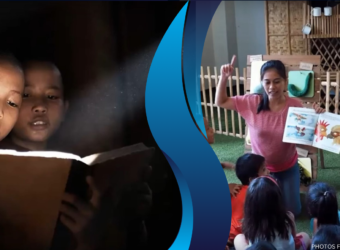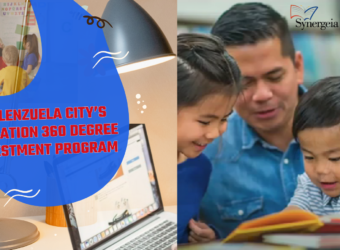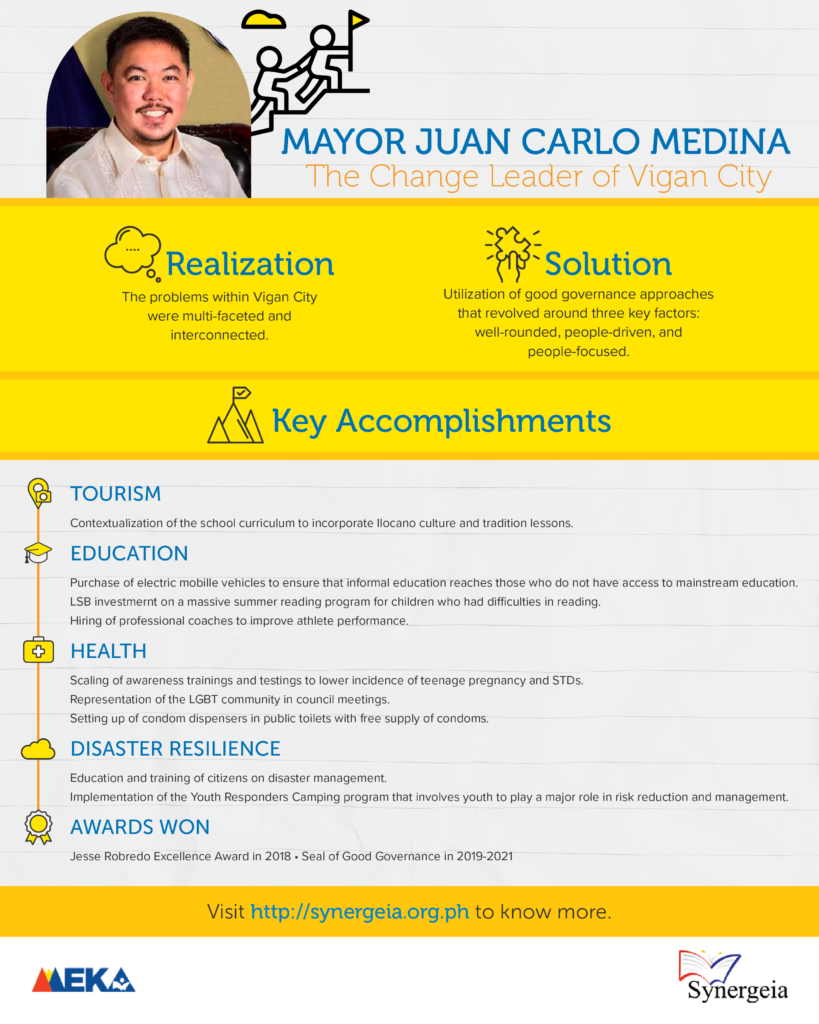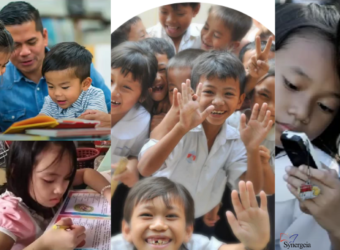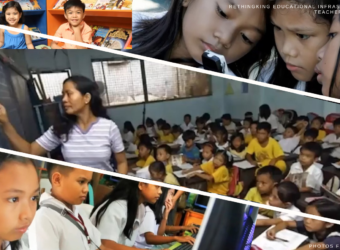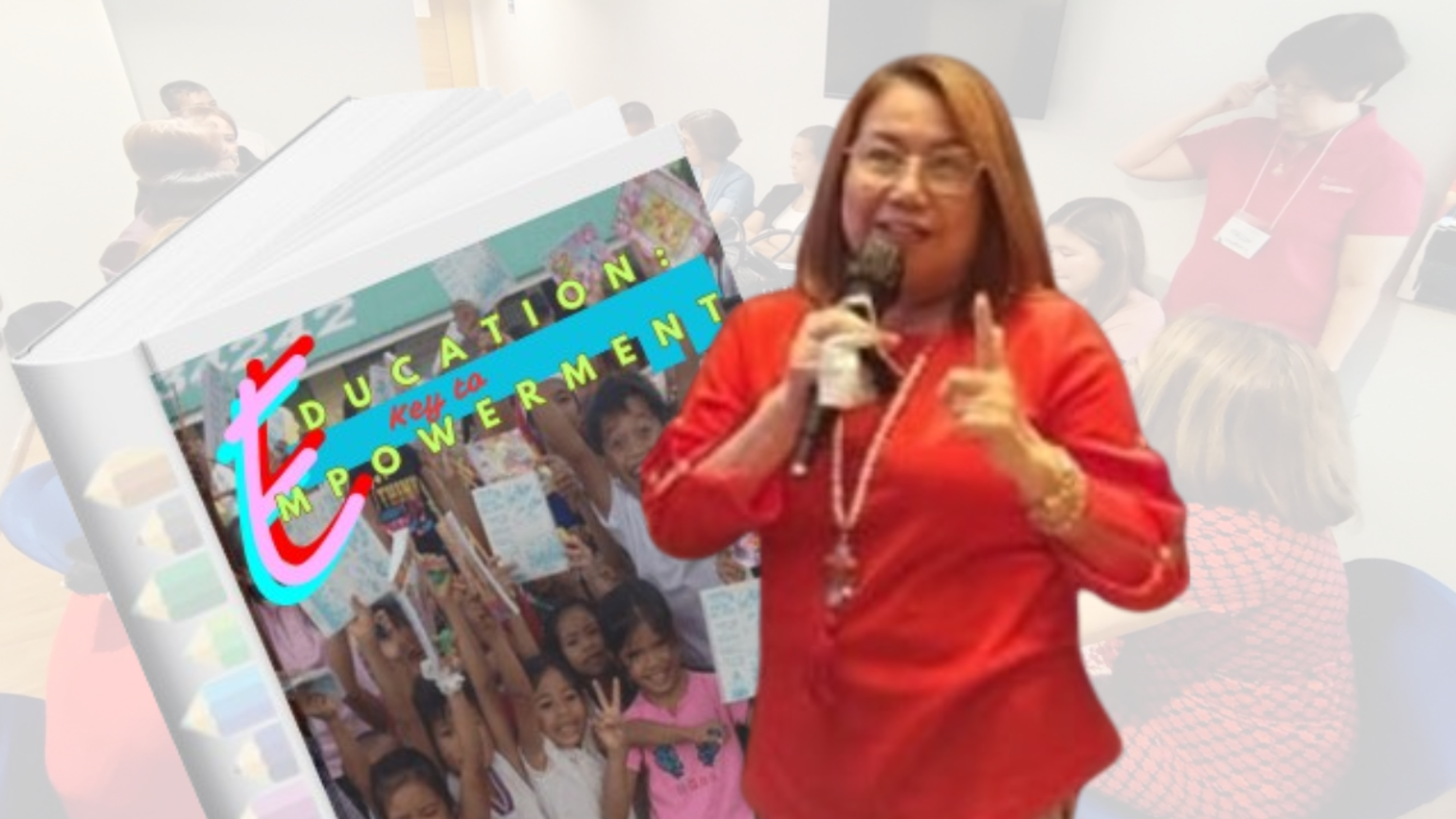
Education: Key to Empowerment
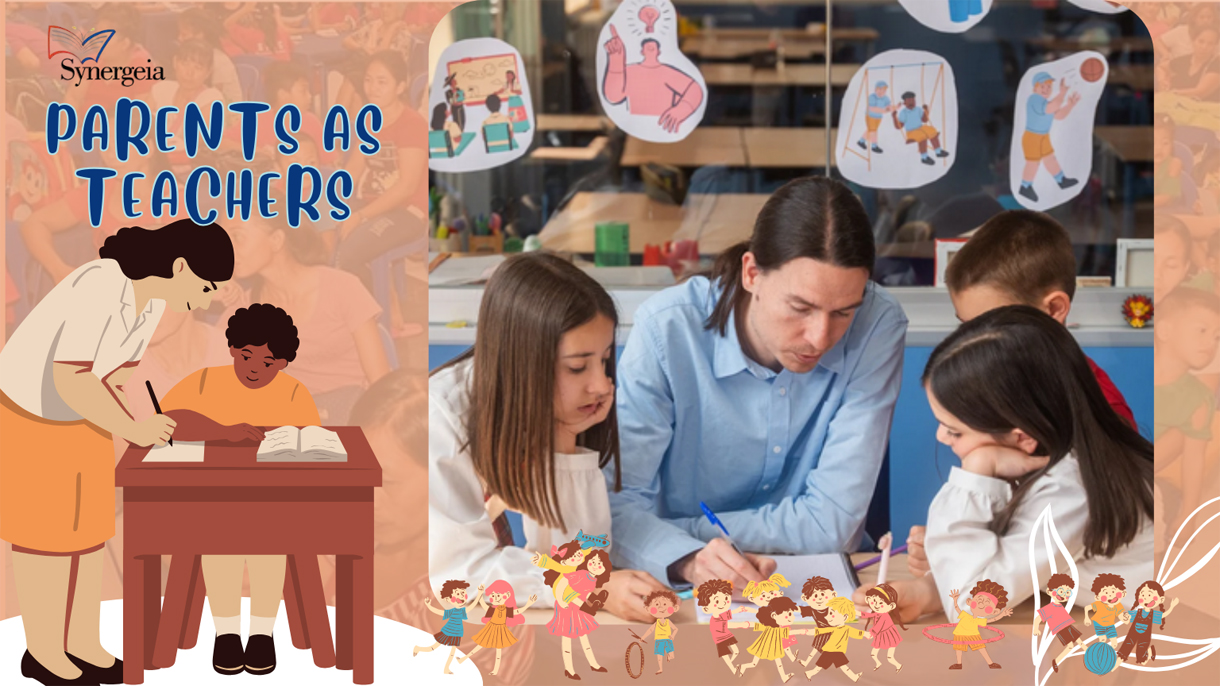
We deliver different parenting workshops depending on the needs of the LGU. We conduct “Nanay-Tatay Teacher” Workshops to build the capacities of parents to support the improved learning skills of their children. We teach parents to inculcate positive attitudes in their children including love for studying and love for reading. We guide them on how they can participate in School Governing Councils and be more active in school activities of their children. A special workshop is conducted by Fr. Michael McGuire, Ph.D in Clinical Psychology, on “Being a good parent means being a good teacher.” He teaches parents to recognize ‘teachable moments’ and use the ‘language of virtues’ with their children. Parents learn how to set clear boundaries and at the same time, to moderate their behavioural controls on their children. “Ako’y Isang Mabuting Magulang” Workshop aims to make parents good role models for their children. Parents start with a self-reflection exercise followed by a short sharing session on their parenting practices and experiences. There are sessions on understanding the rights of children, and on gender equality and sensitivity. Parents have exercises on positive discipline and developing good manners and right conduct so their children can grow up to be good citizens. We help parents deliver education in the new normal. We run a webinar entitled “Nanay-tatay-ate-kuya-tito-tita-lolo-lola Lahat Sila Teachers” Program online and in parallel, developed a parents’ manual that we share with LGUs. We teach parents techniques on how children can learn best such as setting rules, enriching their comprehension skills, through motivation and constant review of lessons, and recognizing that children have different skills and learning styles.
We hold “Pandemic Awareness” Workshops to brief parents on the covid 19 pandemic and health care practices to follow. Parents were taught practical ways to cope with the pandemic such as making an anti-viral solution using zonrox and water which they can use to clean and disinfect surfaces. They also learn how to make simple do-it-yourself (DIY) face masks. We teach simple skills in our “Livelihood Training” for parents of out-of-school children. Mothers and fathers learn haircutting and therapeutic massage. In addition, mothers are taught make-up and manicure-pedicure skills. Parents can apply the livelihood skills they learn to earn income for their families and enable them to send their children to school.
Source: Synergeia
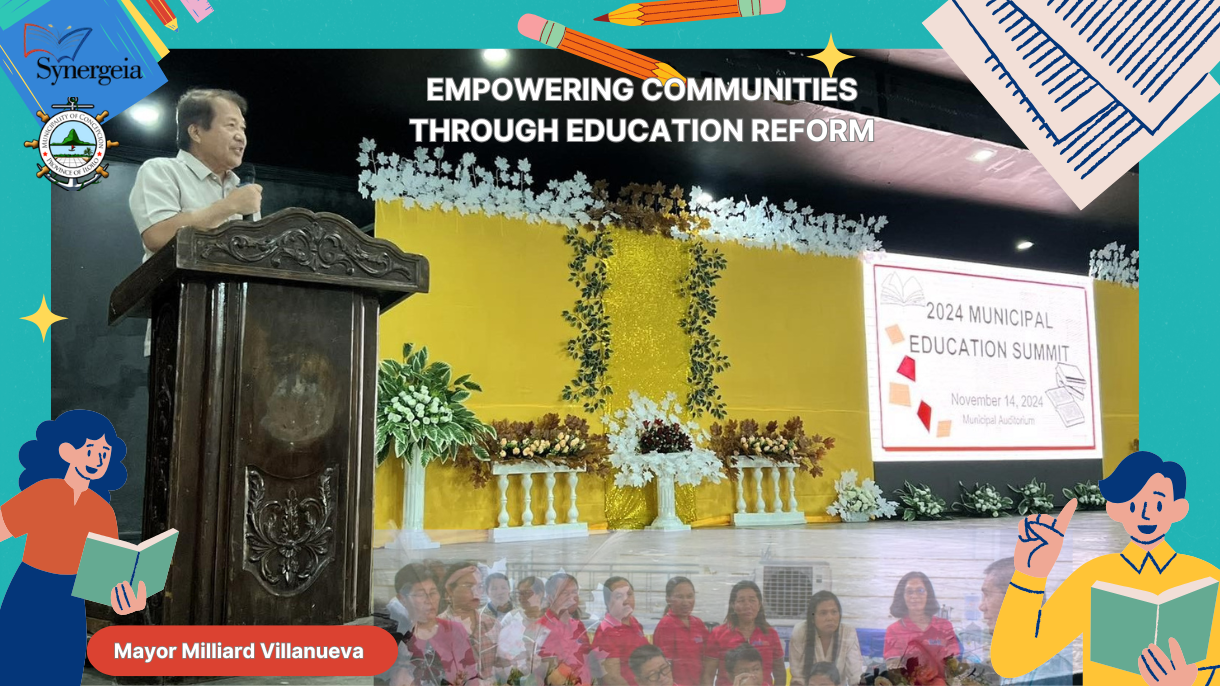
Education Summit of Concepcion, Iloilo: Empowering Communities Through Education Reform
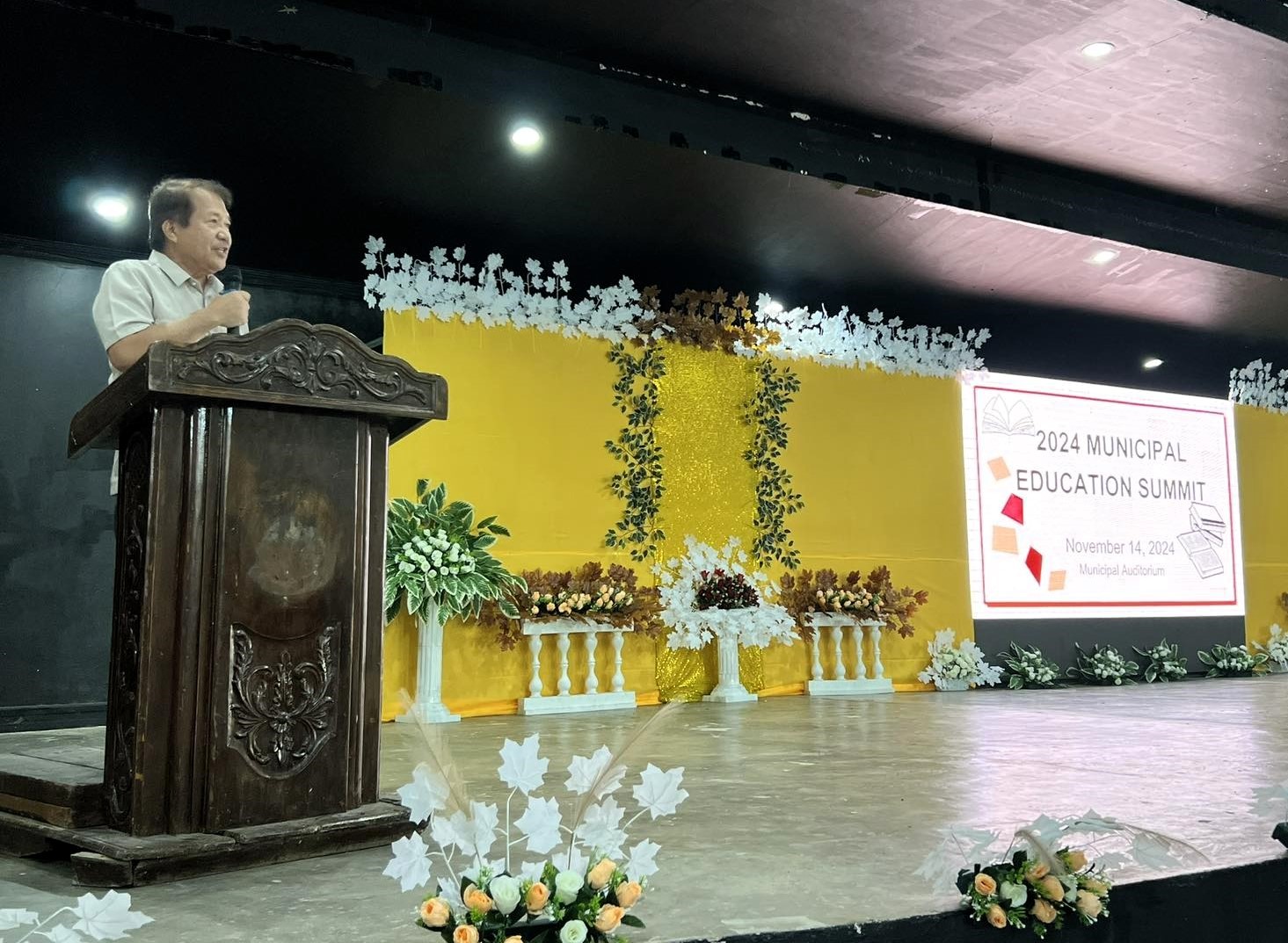
It is often said that empowering communities begins with providing them access to information. With this principle in mind, Mayor Milliard Villanueva, a staunch advocate of education reform, proudly presented the state of education in Concepcion during the recently held Municipal Education Summit. His address highlighted the pivotal role of the Local School Board (LSB) as a platform for fostering transparent, accountable, and inclusive development. He detailed how the Special Education Fund (SEF) is strategically utilized, emphasizing its contributions to a brighter and more inclusive future for every Concepcionanon.
The regular meetings of the Local School Board have become a cornerstone for addressing challenges faced by the education sector. With over half of the municipality’s school buildings located on islands, urgent issues such as infrastructure development and the construction of essential facilities take center stage. These meetings serve as a venue for ensuring transparency and amplifying the voices of schools, guaranteeing that the local government addresses their specific needs and concerns. For School Year 2023-2024, the two educational districts of Concepcion received allocations of Php 4.7 million and Php 3.3 million, respectively.
The town’s dedication to improving literacy and numeracy is evident through initiatives like *Project BATA* (Bata Alerto, Talentado, Asensado) and *Project Milliard* (Multiple Integration of Localized Learning Interventions on Arithmetic and Reading Development). These programs received a significant Php 2.9 million from the SEF budget, reflecting their priority in the municipality’s agenda. Furthermore, since the reopening of schools post-pandemic, Concepcion has rolled out a range of municipality-wide programs. These include remedial education, specialized training for teaching and non-teaching personnel, supplemental feeding, and early childhood care development—all aimed at supporting the holistic development of learners.
For Mayor Villanueva, the transparent and effective use of the SEF embodies his administration’s unwavering commitment to education and the well-being of every learner in the community. By fostering collaboration and addressing pressing challenges, Concepcion continues to build an educational system that empowers its people and shapes a brighter future for all.
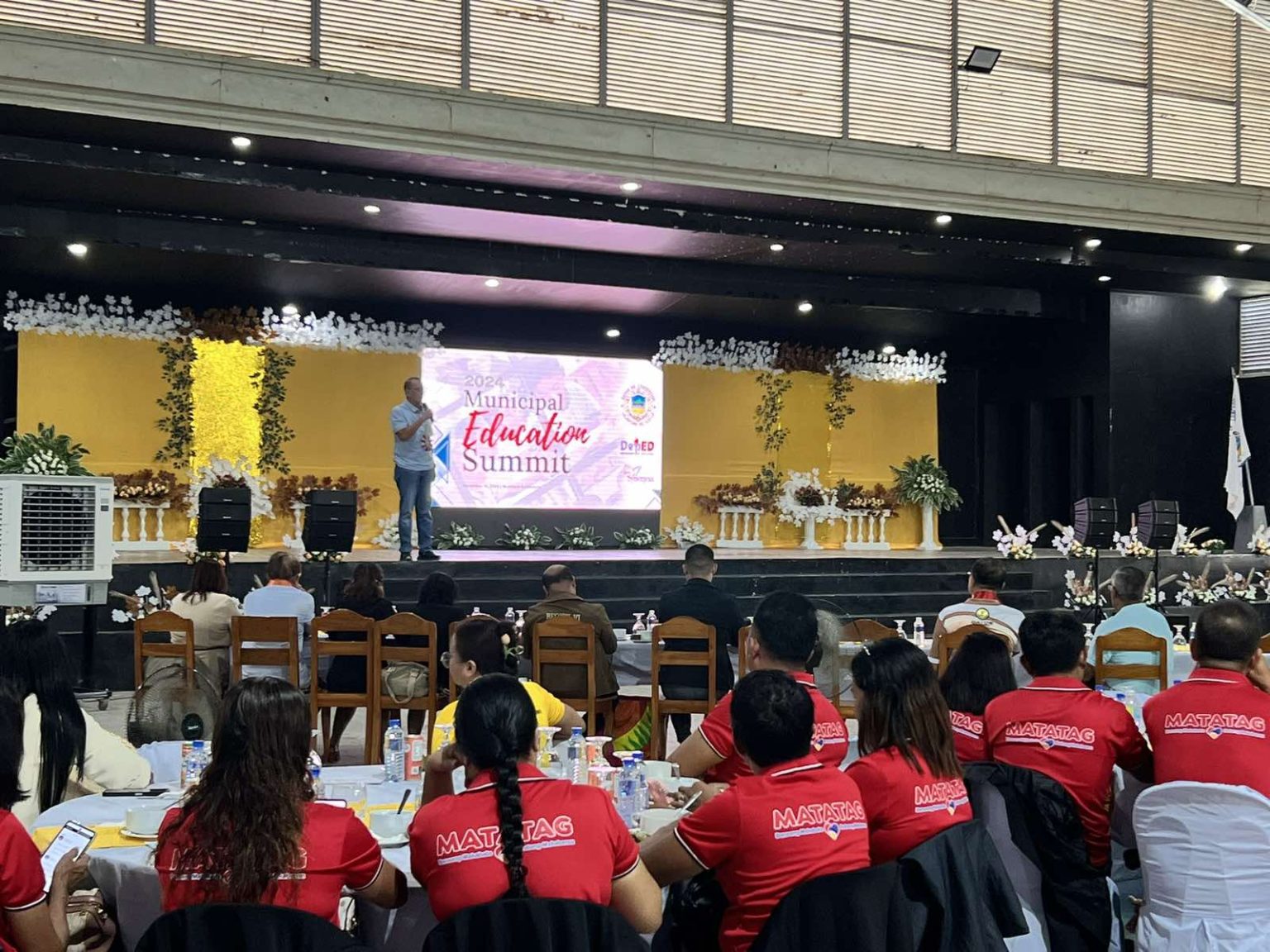
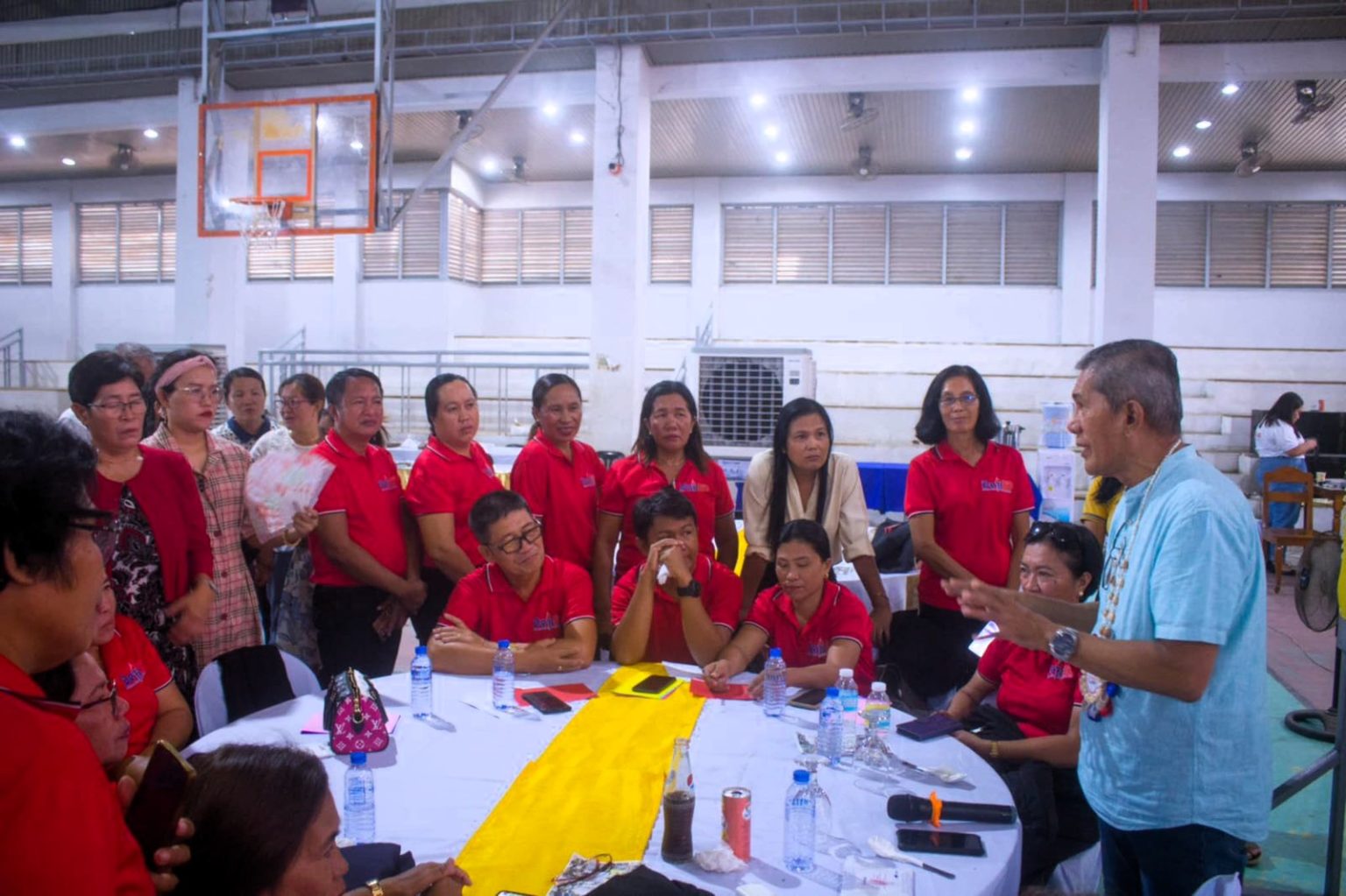
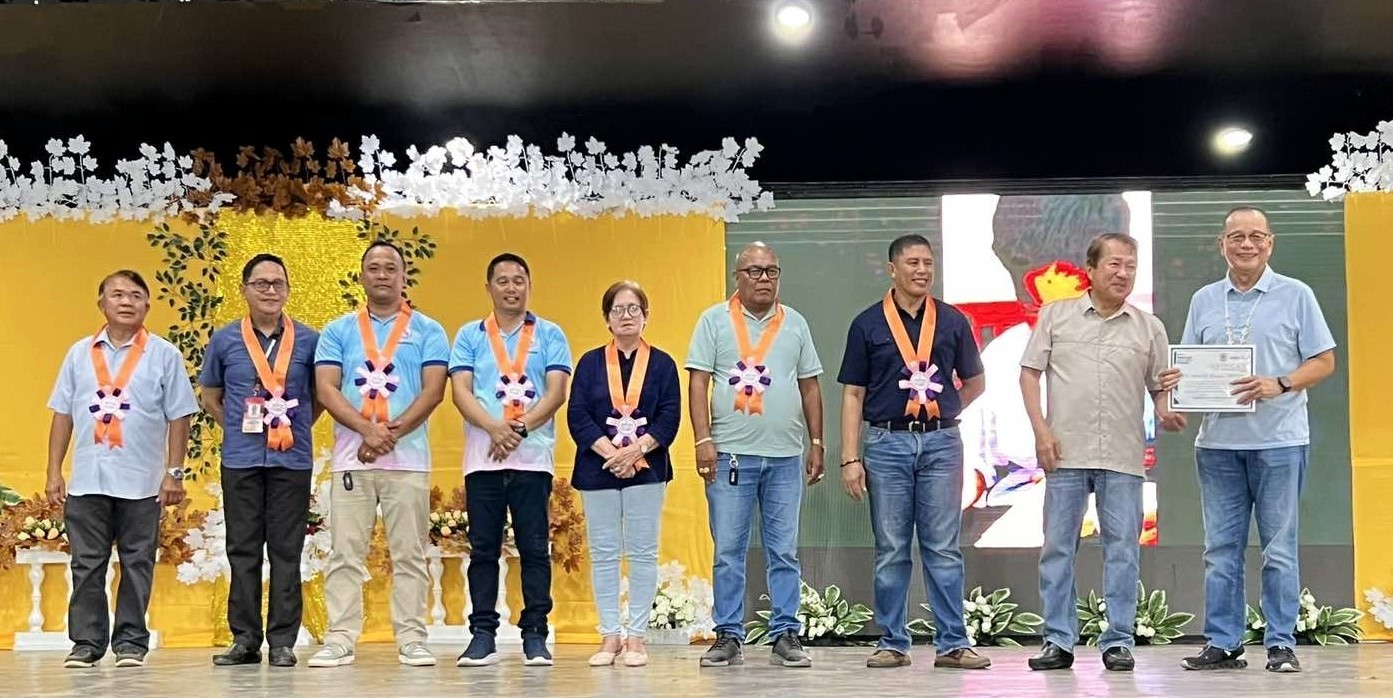
Source: Synergeia
“Before you are a leader, success is all about growing yourself. When you become a leader, success is all about growing others.” – Jack Welch
This paradigm is clearly manifested by Mayor Agatha Cruz of Guiguinto, Bulacan who believes that leading and learning are indispensable to each other.
As a game changer in education, she brings new power to listening, consensus-building, collaboration and partnership in creating a more solid foundation to good governance and education reforms.
Listen to how Mayor Agay, who also now chairs the LEARN Council whose members include the Local Chief Executives from Central Luzon, Southern Luzon, National Capital Region, Eastern Visayas, and Surigao del Norte. leads by learning and innovating with a heart for her community’s goal to put education at the forefront of change and continuous improvement.
Source: Instagram

Education Summit in Sara, Iloilo
13 September 2024
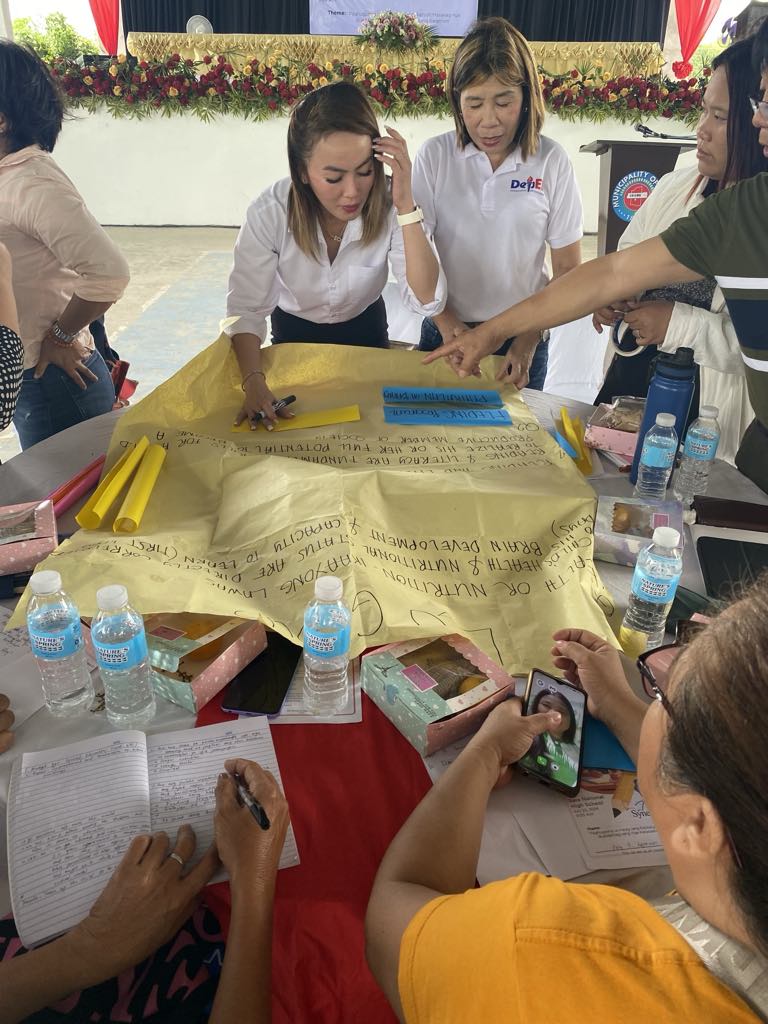
Once a battle-hardened warrior on the battlefields, retired general and now Mayor Jon Aying’s transition as a civilian leader has been remarkable. As 200 people from different walks of life trooped to Sara National High School gymnasium to attend the municipal education summit, Mayor Aying stood tall as he delivered his Education Address to his constituents. He reviewed the schools’ performance indicators, explaining what the figures meant. Starting from enrollment figures for the past three years in elementary and high school, he explained and gave comments for his constituents to clearly understand what those pie and bar charts mean in every performance indicator flashed on the LED board. When he came across the reading proficiency and numeracy indicators, he correlated them to the dismal performance of our school children, who lagged, as shown in the PISA results with the rest of the countries of the world. He also highlighted the nutritional status of the schoolchildren. His message is to develop strategic maneuvers to teach the kids competency in every ladder of their education journey. He told his constituents how the local government spend its Special Education Fund where they matter most: payment for additional teachers, infrastructure upgrades, and community engagements. He ended his message with his favorite African proverb, “It takes a village to educate a child.” He wanted the children of Sara to remember his administration, not for the battles won but for the futures secured.
In the workshop that followed, the participants coming from the PTAs, SGCs, Barangay Captains and the Kagawads in charge of education, LGU officials, Members of the Sanggunian, the religious sector and the CSOs were unanimous in their answers.
For them, the most essential learning areas we need to improve are:
- literacy and numeracy,
- good manners and right conduct, and
- nutrition.
Among the members of the PTA and the SGC, they push for the active involvement of parents in reading, numeracy and nutrition. A group of parents shared that they have been doing rounds of bible studies in schools to teach the kids the correct attitudes and values. Admittedly, school heads observed a decline in the enthusiasm of school children to learn because of the influence of gadgets. The heads of offices and the sanggunian members were passionate about pushing for the improvement of the health condition of the school children by actively supporting programs on health and nutrition by the local government. They commit to legislating local initiatives to improve children’s nutritional status in the first 1000 days. The barangay captain and their kagawads quickly added that every barangay and school should have their community and garden to provide vegetables for the school feeding program.
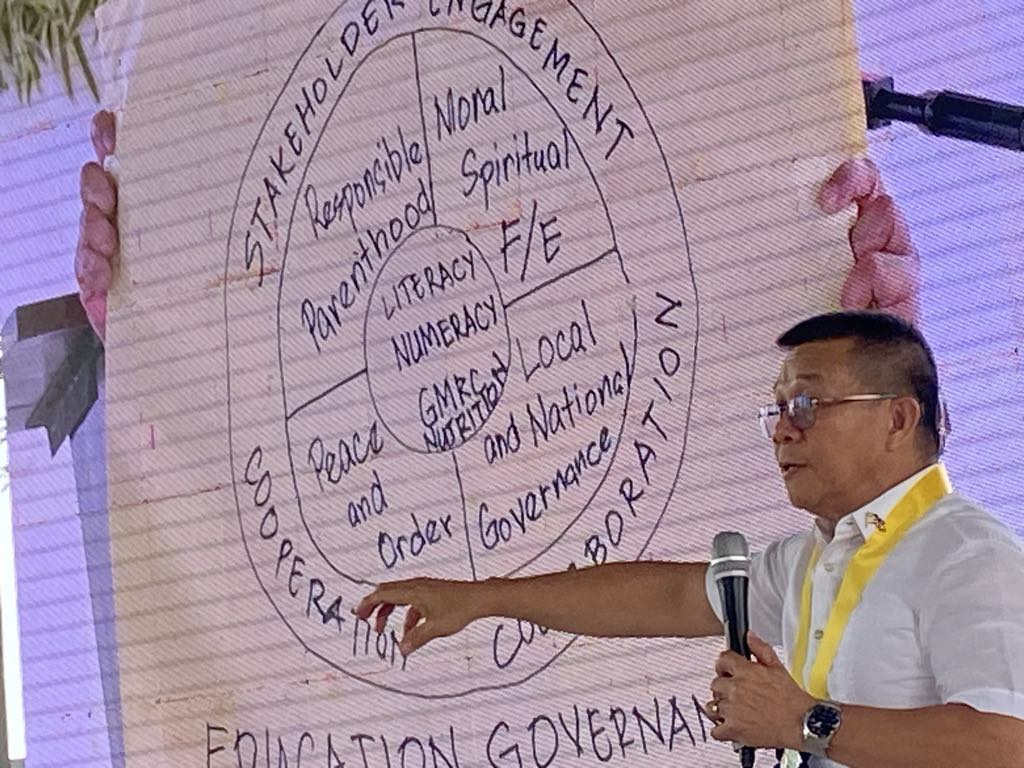
After attentively listening to the workshop reports, Mayor Aying presented his synthesis in a Manila paper he illustrated called the Education Governance Framework. Real-time feedback based on the answers to the workshop questions showed that the various sectors in the Municipality of Sara were pushing for improving literacy and numeracy among the school children to address the continuous decline of the state of Philippine education. Corollary to that is the concern and observation of everyone that today’s schoolchildren hardly say sorry, excuse me, and thank you, to the dismay of everyone. Aside from their nutritional status, it also affects children’s memory, attention, and cognitive abilities. Mayor Aying pointed out that the identified problems are offshoots of the environment surrounding the child, which is the school he goes to, his family including its moral and spiritual orientation, the system of governance both at the local and national levels, and the kind of peace and order situation where he lives. His marching order for everyone is for all stakeholders to cooperate and collaborate towards ensuring a better future for every Saranhon.
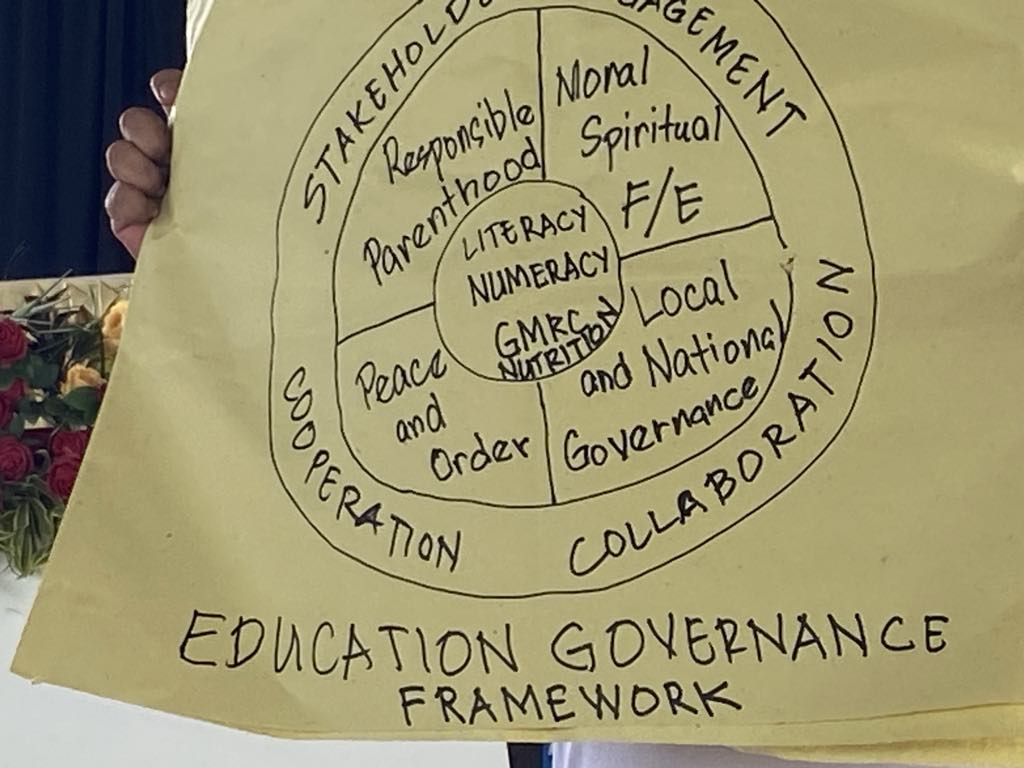
Source: Synergeia
Synergeia Team for Training of Teachers in Reading at Maluso, Basilan with Former Bulacan Governor Josie Dela Cruz, former Vigan Mayor Carlo Medina of Vigan, Dr. Nene Guevarra, former Mayor Beng Climaco of Zamboanga, Kong Tawisil, Synergeia coordinator, and Ms. Annie De Leon of Synergeia.

Training of Principals of Iloilo (Proof of Concept)
(A five part series on the Training of Principals in the Province of Iloilo under the Proof of Concept initiative on the Devolution of Basic Education Towards Better Reading Outcomes to LGUs )

Part 1: Riding on the Journey of Self-awareness
When you see a Principal, what comes to mind?
The Head of a school whose voice demands attention and response. The most powerful and intelligent leader who believes in his power to change situations and people. The penultimate talent whose skills and experiences are above everyone else and therefore possesses the utmost credibility and integrity worthy of the best in its class of school commanders.
So how do you train a Principal without getting a piercing look in the eye, a raised eyebrow or a fierce tone?
Synergeia recently conducted a two day training workshop for 120 school principals from 12 LGUsin the Province of Iloilo, the experimental group for the Proof of Concept initiative on the Devolution of Basic Education Towards Better Reading Outcomes to LGUs.
The training activity was aimed at building the capacities of principals to produce 100 per cent of grade three students as independent readers by the end of school year 2024-2025.
How did the training go? In the end, why did the principals smile in gratitude, raise their right thumbs in approval, and pound their hearts in serious dedication and commitment to their mission of developing good readers of their grade three pupils?
The importance of self-awareness was at the core of gaining acceptance of how the principals viewed their roles, attributes and characters in the jobs that they perform (internal) and how others see them while they do what they are mandated to fulfill (external).
Self-awareness is quite a rare quality. The boldness and courage with which Synergeia filed the spirits and demeanor of the principals to ride on this journey of self-awareness was remarkable.
And the journey became more exciting because the principals didn’t ask “why” but “what” they can learn to see themselves more clearly. They were unanimous in their belief that no matter how much they have achieved, there is always more to learn.
In the process, the principals acknowledged that school leadership is a multifaceted and high expectations role that requires them to think, behave and relate as:
- CEO of a school
- Mentor
- Listener and Consensus Builder
- Team Lead and Collaborator
- Role Models
- Culture builders of learning and achievement
They also recognized that there are challenges confronting them which they must collectively overcome with the help of their local leaders.
Among them, the principals cited conflicts with parents, protection of teachers from aggression, differences in viewpoints with other school officials and superiors, problems in classroom infrastructure and supplies, constant changing of positions and tedious workload.
But the most compelling one was the set of values and skills that they must adhere to as a guide for their decisions, actions and interactions with others.
Part II. Rediscovering The Roles Of The Principals
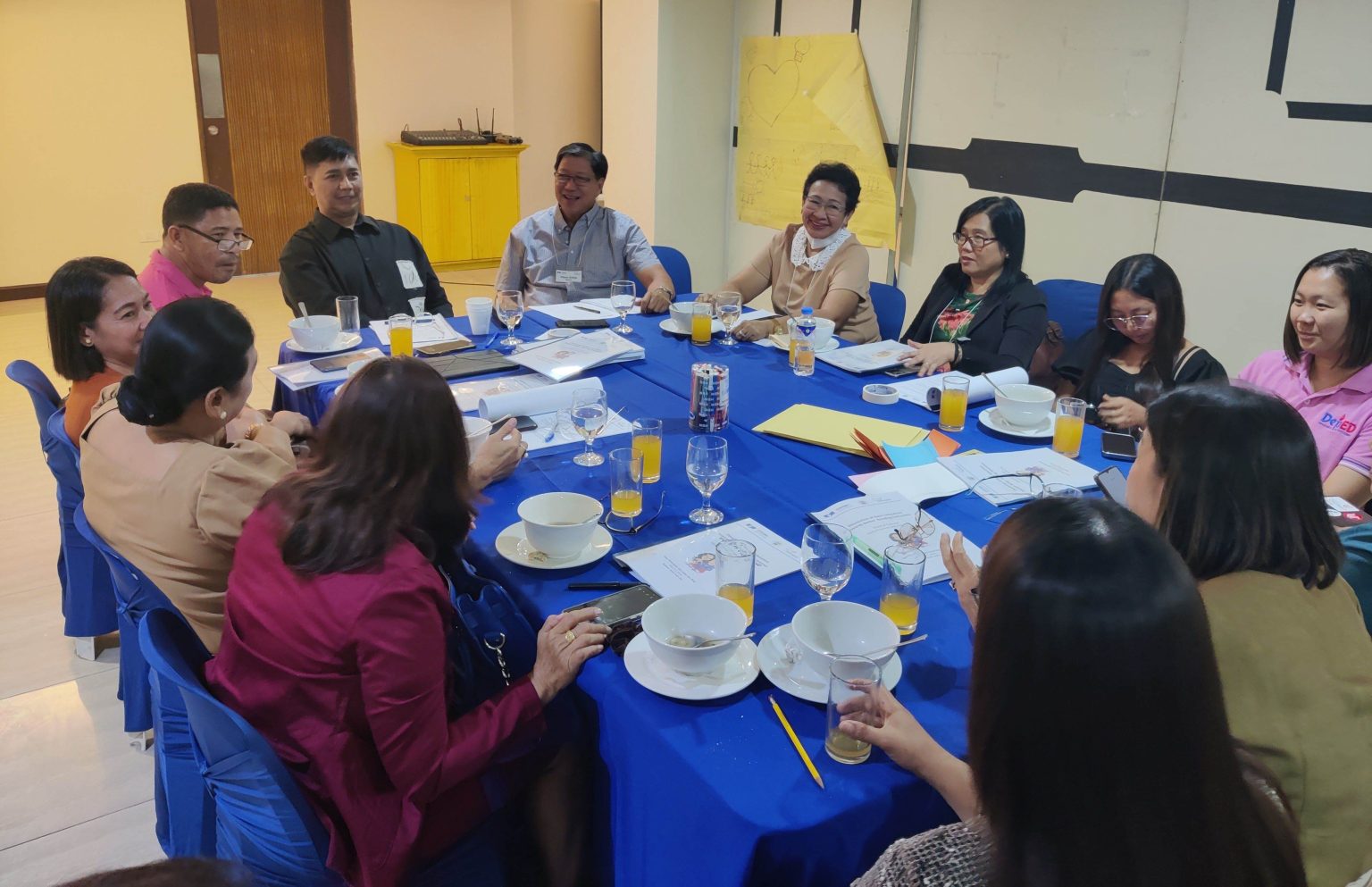
The training was anchored on the outcome of the self-awareness process where the principals rediscovered their roles and how they visualized their transformation as multi-dimensional leaders in their schools.
- As CEO
The principals identified a CEO as the highest leader in an organization or corporation who oversees everything from its vision to execution to sustainability.
They pictured the CEO as the guy who:
- Identifies the problems and priorities;
- Establishes systems and defines processes;
- Sets performance targets or expected outcomes;
- Implements programs that will achieve expected outcomes; and
- Undertakes the monitoring/assessment/evaluation of program results vs expected outcomes.
The principals agreed that their role is like that of a CEO who is responsible and accountable for the school’s performance in terms of learning outcomes, stakeholder management and resource generation.
- As a Mentor
The principals identified a mentor as one who:
- Welcomes and values opinions, ideas, advice from other people;
- Trusts and shows appreciation for teachers’ work;
- Knows, emphasizes and understands concerns of teachers;
- Fosters democracy, objectivity, fairness and equity in decision-making and conflict resolution;
- Focuses on issues without being influenced or pressured by others, including politicians; and
- Ensures transparency, flexibility and accountability.
The principals further agreed that as mentors, they must be role models to inspire others and through time, earn their respect and admiration.
- As Listener and Consensus Builder
Through a case study, the principals were exposed to a potential scenario which raised the questions of how a decision-making process can be more effective through a participatory model characterized by collective listening, insighting and consensus building.
Specifically, the case study revolved around a situation where a principal employed the School Governing Council or SGC to gather inputs and ideas on how the school could increase its potential to obtain a higher passing rate on the National Achievement Test for its students.
The principals found that while a participatory model helps in developing the values of shared responsibility, accountability and transparency and in strengthening empowerment and involvement of stakeholders, there are some
disadvantages. These included inefficiency, lack of competency of some stakeholders, and invariably the prevalence of a less solution-oriented discussion.
Ultimately, the principals agreed that there is good in a more consultative and inclusive process but there is scope for improving how it is done to ensure diversity, equity, transparency and integrity of decision-making. This is most relevant in school programs requiring community support like the Brigada Eskwela, school donation drive, and beautification/cleanliness projects.
- As Team Leader and Collaborator
The concept of team building and collaboration was introduced through creative exercises which resulted in the affirmation of certain truths for the principals, including: a. People have similarities and differences in beliefs, ideas, perspectives and experiences; b. Diversity brings about a different level of quality in the way people think, behave and act which on balance, offers a more thoughtful and provocative alternative to generating community-centric wisdom and building consensus.
The principals acknowledged that the team-building process, from Forming, to Storming, Norming and Performing, is difficult and challenging. But with courage, determination, open communication and alignment in strategy and objectives, the principals agreed that their role as team builders and collaborators can succeed in creating more productive and high impact initiatives in reading and education.
- As Culture Builders of Reading, Learning and Achievement
The principals recognized that as effective school leaders, they help build and shape the culture of their schools in reading, learning and achievement, influence educational outcomes, and impact the lives of students, teachers, staff and communities.
Culture building is a huge mission that not only rests on the shoulders of principals but on the entire educational ecosystem which needs to work together and support each other.
The principals discussed various forms of support from the LSB/LGU, DepEd, teachers, parents and community leaders and members, including:
- LSB
- school building, classroom
- teaching and learning materials
- salaries or allowances of non-teaching personnel
- Teachers
- home visitation; one to one student tutorials/remediation
- community outreach – advocacy campaign, check students’ absenteeism
- conduct of sessions with parents
- create school FB page to showcase school programs and accomplishments and achievement scores
- weekly meeting of teachers e.g. LAC sessions
- encourage parental support and commitment; collaborate with parents
- Parents
- parental support e.g. follow up of lessons at home; become para-teachers
- peer to peer learning and parents mentoring
- regular meeting with teachers; build rapport with teachers
- DepEd
- a dedicated room in school to be used as audio visual room for creative learning
- additional plantilla position for teachers in Batad who will focus on struggling readers
- Principals
- presence and visibility in school daily
- classroom monitoring and follow up
- teacher motivation
- participatory model in decision making
- high intellectual and emotional quotient (IQ and EQ)
- passion for mentoring and belief in teachers’ capacity and efforts
- role models
- LSB
- As Role Models
To become outstanding role models, the principals were equipped with knowledge about personality development and leadership to boost their self-image and confidence while they are performing their jobs.
The principals agreed that combined with competency and professionalism, a remarkable personality imbued with belief and trust in one’s capability and power to make a difference in their schools will boost their potential for higher success in their mission.
Part III. Learning the Value of Data and Its Use

The principals were asked, which is better – too much data, lacking data or no data?
This question extends to many local chief executives who may not appreciate achievement scores or performance data.
The development of the principals’ capacity to use, understand, analyze and manage data to design reading and learning programmes is thus a major objective of this training programme.
The concepts of ratios and percentages were introduced to understanding performance data and thus provide a more rational basis for interpretation and analysis and ultimately, better judgment and decision-making.
Using data on reading performance and percentage and ratio analysis, the principals drew some interpretations, such as,
- Grade 4 female students perform better than male students.
- There still are Grade 6 students who are struggling readers.
- There are more male struggling readers than female.
- There are more female independent readers than male.
This showed that using the reading scores, the appropriate interventions and teaching strategies can be designed to address the reading problem. For instance, Grade 6 students need remediation because there still are struggling readers.
The principals agreed that the proper use, analysis and presentation of data is a strategic tool for deriving sound, timely and effective solutions to reading and learning gaps and issues. It will also facilitate community participation and engagement and elevate discussions to a more data-based insighting and ideation on the best options to address problems.
Part IV. Parting Words from the Local Leaders
What sets the Province of Iloilo apart in this noble experiment on the devolution of basic education to LGUs is how their local leaders talk and walk their talk in the continuing quest for improving the future of our children through reading and education.

Governor Toto Defensor relentlessly emphasized the urgency of turning around from this reading and education crisis which essentially is becoming a threat to our national security.

Mayor Jerry Trenas strongly framed education as a process of “forming” beyond “informing” to deepen our understanding of people, of human capital, who need to be developed and capacitated through education as the fundamental drivers of economic and social transformation of our nation.
With these voices inspiring communities to think and act with a deeper sense of commitment and resolve for better education, how can LGUs fail?
Part V. Delivering Through Commitment and Action

Motivated and driven by their local leaders’ call for commitment and action, the principals consolidated their individual school work plans aimed towards achieving the goal of making every Grade 3 student a reader by the end of SY 2024-2025.
The plans included:
- Conducting a pre-assessment of students to get a baseline and know their weaknesses and needs in reading;
- Meeting with teachers, parents and other stakeholders including the Mayor and LSB mayors to develop a comprehensive reading plan;
- Strategic planning for reading and learning interventions like remediation, provision of reading materials, etc;
- Training of teachers on better strategies and approaches to improve reading, peer-to-peer mentoring, sharing of creative teaching strategies and principals’ mentoring of teachers;
- Training of parents to support reading lessons at home;
- Conducting home visitation of struggling readers and doing one-to-one tutorials;
- Monitoring progress of students’ performance through regular classroom observation and monitoring by principals;
- Sharing of teachers’ best practices which can be done during Learning Action Cell (LAC) sessions;
- Conducting students’ post-assessment;
- Organizing assessment, analyzing results and preparing evaluation reports;
- Presenting the results to school stakeholders and the LGU/LSB and providing recognition and incentives to the highest performing class; and
- Planning for the sustainability of the reading program with the support of LGU/LSB.
Source: Synergeia
First, it is an organization of like-minded local leaders whose vision for education is as long and enduring as its name. LEARN stands for “Learning Environment Accessible in Rebuilding the Nation.”
Second, there is nothing typical about the LEARN Council in terms of its broad membership which compares with the focused, area-centric representation of a standard “regional education council.” It has for its members the Local Chief Executives from across Central Luzon, Southern Luzon, National Capital Region, Eastern Visayas and Surigao del Norte.
Third, because of this more expanded and diversified structure, the LEARN Council rises with a resolute and determined energy and passion, allowing it to joyfully experience a kind of “rebirth” that exemplifies its resurgence towards the opening of a new chapter in its existence.
Its readiness and wherewithal to lead LGUs in the implementation of education governance programs extends beyond a renewal of faith in its mission but more of a strengthening of vigor and dedication to what its name is hoping to achieve.
Finally, the renaissance of the LEARN Council promises to be a living proof of the capability and leadership of its officers and members to improve the reading proficiency of children, share and adopt best practices in education governance and work to encourage more LGUs to be part of LEARN.
Mayor Agatha Paula Cruz of Guiguinto, Bulacan is the new Chairperson of the LEARN Council. Other newly-elected officers are:
Mayor Alfredo Coro II of Del Carmen, Surigao del Norte – Vice-Chairperson
Mayor Wes Gatchalian of Valenzuela City – Secretary
Mayor Joy Belmonte of Quezon City – Treasurer
Mayor Francis Garcia of Balanga City, Bataan – Auditor
Mayor Josell Aimee Vistan of Plaridel, Bulacan – Communication Officer
In its two meetings this year, the LEARN Council has accomplished quite a feat. It reviewed its by-laws and analyzed the education performance of members towards solidifying their goal and success metrics as an education council.
Indeed, we can trust that the LEARN Council is relentless to put education of our children on the right and more progressive track.
Source: Synergeia
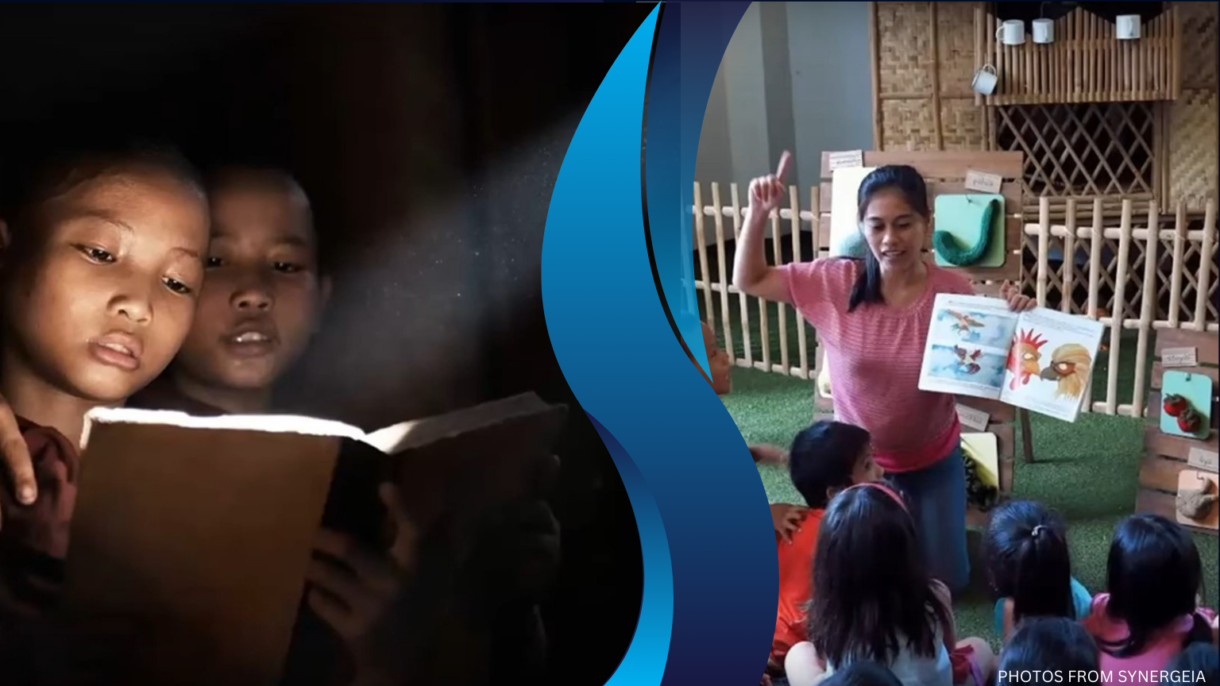
The Governance and Finance of Education by Local Government
March 30, 2023
The study is a persuasive case of how critical the Special Education Fund (SEF) is in the delivery of basic education in the Philippines. The 2018 SEF of P32.98 billion was 15% bigger than the Maintenance and Operating Expenditures (MOOE) that were given to schools by the national government (P28.6 billion). On a per capita basis, the SEF of eight (8) Regions was bigger than the per capita MOOE that the Regions received.
Source: Synergeia
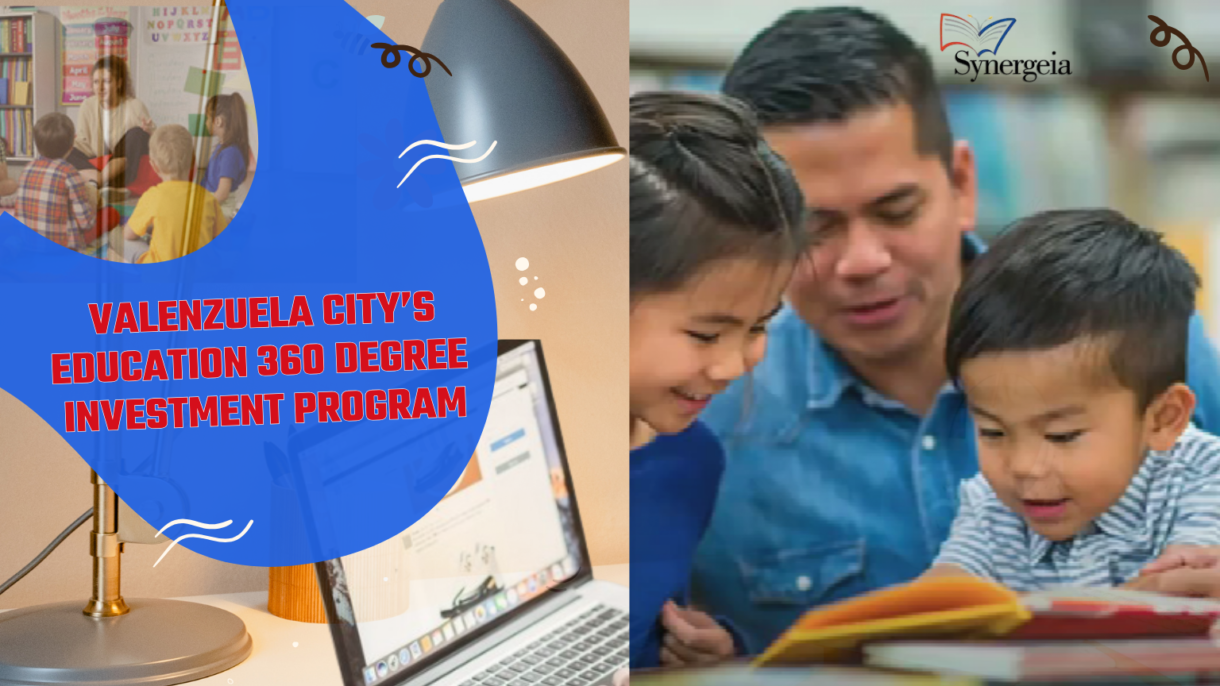
Valenzuela City’s Education 360 Degree Investment Program
13 August 2022
In the last 15 years, Valenzuela City has evolved from a laidback and nondescript town to a progressive and bustling city. It has developed into a major economic and industrial centre in the country. The growth and forward-looking stance of Valenzuela City can be attributed to its immediate past and current leadership.
Valenzuela is known as the city with innovative practices. Leaders from all over the country have made it a favourite site for study tours or “lakbay-aral.” The City’s significant reforms on governance encourage other cities and municipalities to replicate and organize similar programs.
Alongside economic progress, the City puts a premium in the quality education of the children from Valenzuela. Typically, education is not within the wheelhouse of the local government and is often left under the Department of Education.
But Mayor Rex Gatchalian is out of the ordinary — taking on the trailblazing role of leading the implementation of the Valenzuela City’s Education 360° Investment Program. Launched in 2013, the Education 360° Investment Program is a holistic, comprehensive, systemic, community-driven and student-centric program that revolutionized the public education system in Valenzuela City.
The City government focuses on all aspects of student’s learning. It adopts a “cover-all-fronts” strategy and invests in every vital aspect of basic education – school supplies, curriculum, nutrition, teacher competency, parental involvement, sports and infrastructure. Through deep community involvement, the program aims to provide every Valenzuelano with quality basic education and produce a globally competitive citizen.
The Education 360° Investment Program consists of the following components:
- Facilities Build Up: Facilities that inspire learning
- Nanay Teacher Parenting Camp: Parents engaged for learning
- Teaching Camp: Capacity-building for Valenzuelano teachers
- Curriculum Development: Manualizing of operations
- Reading Camp: Hitting the problem at its core – illiteracy
- K to 6 Feeding Program: Rallying volunteers to combat malnutrition
- Performance Incentives Program: Incentivizing performance equals higher attendance rate, higher degree of interest
- Inclusive Learning: Special Education and strengthening of Alternative Learning System (ALS)
- Well-rounded, Balanced Student Program: Tying up moral values to baseball and street soccer (sports skills)
The Mayor believes in participatory governance. Broad ownership of programs brings out enthusiastic involvement, shared accountability and gives opportunities to community members to contribute.
Empowerment starts with informing and listening to residents. The city government regularly conducts consultations with different sectors, school summits, and workshops with teachers and parents. These are opportunities to discuss the state of education in the City: how many are in school, how many are dropping out, how many are performing well, and why children are under-performing. The workshops turn into a listening session. Residents, local leaders, parents and teachers share their dreams for the students and the realities that they face. Their difficulties and inadequacies become the basis of programs that will be collaboratively undertaken by the community and will be funded by the SEF budget. The Education 360° Investment Program was formulated through consultations, listening and participatory planning.
Expansion of LSB
Citing Synergeia’s mantra of “Building a Constituency to Make Education Work,” Valenzuela City strengthened its LSB by expanding the composition of its membership through Executive Order 2019-324.
In addition to the LSB members mandated by the Local Government Code, the following are made part of the expanded LSB:
- President, Liga ng mga Barangay
- City Budget Officer
- Head, City Communications Office
- Head, Office of Senior Citizens’ Affairs
- DedEd Chief Education Supervisor, Curriculum Implementation
- Representative from Association of Private Schools
- Fr. Lito Caluag, Chaplain of Our Lady of Fatima University
- Representatives from Splash Foundation, Foodsphere Inc. (CDO) Foundation, Fatima Hospital
- Project managers of Education 360 program components (Nanay-Tatay, Reading Camp, SPED, ALS, Sports, Feeding, Teachers Camp)
To streamline meetings and decision-making, the expanded membership of LSB was clustered into multiple technical working groups headed by action officers/project managers. This makes work faster and more efficient. There is no need to call the whole expanded LSB to discuss specific issues that do not concern everyone.
Forming LSB committees allow for a more even playing field, ensuring that everyone is able to contribute and make their voice heard. By giving members this kind of opportunity, discussions and meetings will not only be more productive but more value adding for the team as well.
The Mayor stressed that bite-size programs should be owned by smaller teams and action officers. By challenging people to take ownership of their work, he encourages them to make things happen. These teams are tasked to meet regularly and report back to the LSB.
This system does not only speed things up but also allows the teams to develop a level of expertise or specialization in the areas of ALS, sports, feeding and so forth.
The regular LSB meeting is set every third Friday of the month. But in reality, the board meets at least twice a month or more. Core group meetings are held regularly. Project Managers convene regular committee meetings as well.
Dr. Meliton Zurbano, Schools Division Superintendent (SDS) of Valenzuela shared that he goes to the City Hall every week for meetings. He said in jest that he is more often seen at City Hall than in his office at DepEd.
Mayor Rex epitomizes the new breed of leaders – restless, energetic and believing wholeheartedly that things can be done better and more efficiently. He demands order in things. And he demands it from himself and from people around him.
His passion for education has moved him to directly takeover the transformation of education system in Valenzuela. He took the helm in planning and implementing a program using a bottom-up approach. Instead of piecemeal reforms, the city government embarked on a holistic approach that will strengthen all the processes which affect basic education.
Mayor Rex said, “The Education 360 Investment Program is systemic – this is its strongest selling point because we acknowledge that there are multiple dynamics at play. You need a lot of components to solve these problems.”
The Mayor is fondly called the “Other Superintendent.” He has a good picture of the current situation of education in the City, its performance successes, challenges and areas requiring attention. He is always up with new ideas and confers with the LSB on how else to improve programs. His energy influences others to do their job and do it well.
He sees to it that every action is oriented towards improving the LSB’s ability to meet the needs of every Valenzuelano child.
Formulation of SEF Budget
School principals convene and carry out the improvement planning process. Principals determine areas that need to be prioritized based on their School Improvement Plans (SIPs). The submitted proposals are consolidated and submitted to SDS for evaluation.
The proposed SEF budget prepared by the school level and city level are consolidated and submitted to the LSB Chair.
The annual budget calendar is prepared before the end of the year. It includes the plans of the LSB, budget estimates and indicative calendar for both division and city-initiated programs.
The Budget Officer stated that the Education 360 Investment Program is anchored on the City’s Comprehensive Development Plan. DepEd’s Division Education Development Plan (DEDP) falls under the Education 360 Program.
Action Officers and working groups of the Education 360 discuss, deliberate and evaluate the different programs. Any adjustments — enhancements, deletion/addition, scaling up or revision will be taken into consideration in the preparation of SEF budget.
Examples of adjustments include:
- Reformatting of Nanay-Tatay-Teacher Program
- Anticipated increase of ALS participants
- Decline in number of feeding beneficiaries / new program addressing malnutrition
The proposed budget from the school level and Education 360 programs are consolidated and reviewed by Budget Officer before it is presented to the LSB.
The Budget Officer said that the project/activity estimates depend on the type of expenditure and number of beneficiaries, if applicable.
It is the City Treasurer who estimates how much SEF revenues can be budgeted by the LSB. The basis of estimates is the collection of the previous year plus an increment of ten percent (10%).
The LSB sets targets and performance indicators for the SEF budget for the year. According to SDS, the LSB uses the targets and indicators set by the DepEd.
Disagreements arise when the Mayor increases the targets higher than the standard indexes.
The preparation of the SEF budget is a collaborative effort of the following key players:
- Mayor – approval of SEF budget
- Project Managers of Education 360 components:
- Vice Mayor Lorie Borja – Reading Camp/Feeding Programs
- Councilors Rovin Feliciano/Tyson Sy – Sports Program
- Councilor Charee Pineda – ALS
- Councilor Carreon – Anti-bullying
- Core (voting) members of the LSB – review of proposed budget
After thorough review, planning and evaluation of the proposed SEF budget, the LSB passes a resolution authorizing spending of the SEF and the Mayor gives his approval of the disbursements of the SEF budget.
SEF spending
The LSB follows the standard procurement process for services, goods, repair, maintenance and utilities. If amount is more than one million Pesos, it would go through the standard bidding procedure.
The Mayor stated that nothing is disbursed over the budget, and no expense is allowed to exceed beyond what has been allocated. The Budget officer ensures that prices are reasonable and competitive.
The SDS prepares a quarterly report which is submitted to DepEd Central. The Budget Officer also submits a report to COA.
The LSB adheres to the principle of transparency and full-disclosure of budget spending. This information is posted on the official website of the City and transparency boards are located at three conspicuous places.
Revenue enhancement
Valenzuela City gained recognition for its resourceful tax collection efforts and honest utilization of funds. The City ranked first in Local Revenue Collection Efficiency in the National Capital Region (NCR) and second among all the cities nationwide for fiscal year 2017. It also registered the highest sum in the Real Property Taxes (RPT) in the region in the same year.
When asked if the LSB engages in any activity to increase the SEF collection, Mayor Rex was quick to say “No.” He said the LSB only knows how to spend.
Revenue enhancement is the responsibility of the Mayor and the City’s revenue enhancement team. As the number of children in the City grows every year, their needs increase as well.
The Mayor stressed the importance of building the SEF through continued efficient tax collection alongside streamlining of spending.
What can we learn from Valenzuela’s LSB?
The most powerful lesson for Valenzuela may not only emerge on the strategies themselves but the processes through which they are created – a concerted process that puts welfare of the student at the centre. In the face of piecemeal approaches to achieving higher quality learning experience, Valenzuela provides an alternative driven by a culture of collaboration, consultation and teamwork.
The Mayor cites what a revitalized LSB requires:
- The expanded LSB membership makes it more representative and participatory.
- LSB is turned into a consultative body which makes it less “Mayor-centric.”
- SEF budget is “Of the Students, By the Students, For the Students.”
- Change of mindset to make it more data-driven.
- Empower and unshackle the LSB to enable it to formulate programs to address pressing matters on the ground but not limited to supplemental programs.
Source: Synergeia
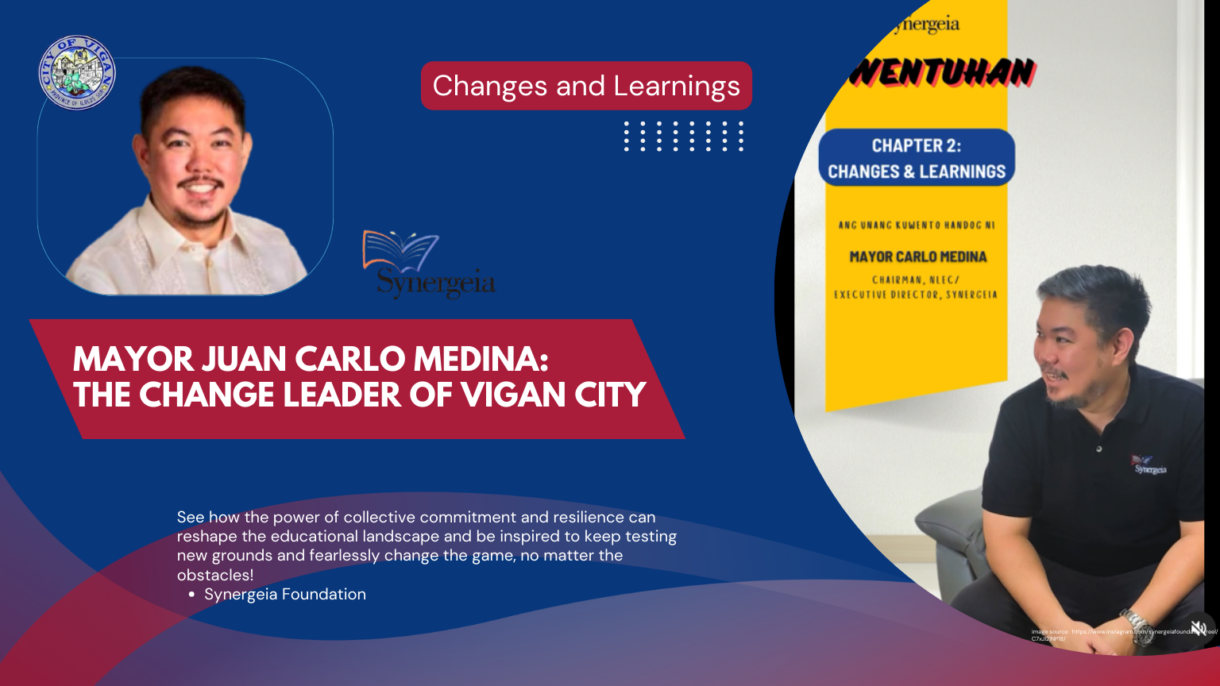
Mayor Juan Carlo Medina: The Change Leader of Vigan City
30 May 2022
When we first met Mayor Juan Carlo Medina of Vigan City in 2017, he did not have a clear picture of how the learners of Vigan City were doing in terms of learning outcomes such as their reading performance, survival rates, achievement rates, etc. Dr. Nene Guevara advised him to begin looking at the data from DepEd for him to see the actual state of education in Vigan and discuss these numbers with the Local School Board (LSB). This conversation was a turning point for the mayor. Often, when mentoring other mayors in our Northern Luzon Education Council (NLEC) meetings and events, Mayor Medina would tell the story of this conversation with Dr. Guevara. He would say that it was embarrassing for him to not know, as a mayor, the state of education in Vigan. He would say that from that point, he made sure that education data evaluation becomes part of LSB meetings, and consulting with community stakeholders on crucial issues becomes his strategy in governing education in Vigan.
Indeed, it was a 180-degree turn-around for Mayor Medina. Since 2017, he has been championing education, not only in Vigan City, but in the entire country. His desire to make his presence count has led other Northern Luzon mayors to appreciate his candor so that during the launch of the NLEC in October 2019, he was elected by his co-mayors as the council’s first Chairman. He has also been tapped by Synergeia to act as a mentor for education stakeholders in Marawi City. Not only that, before and during the pandemic, he was called as resource person for various national events organized by Synergeia.
Getting to Know the Mayor
Taking a closer look at what makes Mayor Medina a champion, we could see that he takes his job as the “father of Vigan” very seriously. When he started his term, he knew only one thing – he will help the Biguenos to the best of his ability. He is systematic in his approach to improving LGU services, putting a premium on community consultation and measurement of results. His vocabulary does not know the word “ako”. He only works along the premise of “kami” and “amin”, referring to his humble approach of being one with the Vigan community in working for its own citizenry.
Mayor Medina’s open mind allows him to always actively seek out learning opportunities from mentors and from fellowship programs such as the Jesse Robredo Fellowship Program and Synergeia Foundation. Learnings from these are immediately applied in his programs in Vigan.
Randomly and unassumingly, Mayor Medina would take long walks to check if their projects were properly being implemented and their ordinances being strictly enforced by the people in government. He would talk to the locals just to see how they were doing. In fact, many of them would ask him for directions, thinking that he was just an ordinary Bigueno. He would gladly show them the way.
Because we have a Mayor who listens with his heart, programs for the most vulnerable were set up in Vigan. The cobble-stoning of the main streets in the heritage center of the city is beautiful and truly upholds its being a UNESCO heritage site. However, upon hearing a PWD complain how difficult it was for him to manipulate his wheelchair on the cobble stones, Mayor Medina is now incorporating PWD lanes into the design of the streets.
The suicide case of a teen-age girl in the past who was sexually-abused and impregnated by her step-father drove Mayor Medina to put more focus on the mental health programs for the people. He said, “Pati tayo sa gobyerno nagkulang dahil kung hindi siya matulungan ng nasa paligid nya, dapat tayo [sa gobyerno] ay nakahanda para tumulong sa kanya. Dapat maramdaman ng bawat tao sa Vigan na lagi kaming nandito para tumulong sa kanila.”
At the Mayor’s Office, one would see Mayor Medina on one of the small tables, working alongside his staff, and not in the grand Mayor’s Office with its own conference table.
Truly, under Mayor Medina’s leadership, the culture has been transformed from that of government being run by only a few people to a government that is run by its own people. Vigan City has seen a behavior change among its people that was never seen before. To the Biguenos, THEY are the government.
Seeing Huge Results with Good Governance
Mayor Medina took governance to a whole new level. Although the public took an active role in the city’s programs, he wanted to deepen the involvement of the entire community in the city’s development process. He wanted the people to be pro-active in identifying the problems of the city. He wanted them to play a key role in the city’s programs – from planning to implementation to evaluation. Through various forms of conversations with the Vigan stakeholders, together, they realized that their way forward was community participation.
Under Mayor Medina’s leadership, the approach to good governance revolved around three key factors – it had to be well-rounded, people-driven and people-focused. Processes, policies and programs were fastened on accountability, transparency, inclusiveness, participation, and evidence-based.
With laser vision, Mayor Medina and the various LGU committees prioritized projects based on poverty incidences, employment malnutrition, student performance and achievement rates, etc. Together, the community watched the numbers improve through time. Mayor Medina emphasized the need for measurements and indicators in the planning, implementation and evaluation of programs. For one, the LGU adopted the Community-Based Monitoring System to delve deeper into the issues of poverty in the city. The LGU uses its own management information system.
Education as a Top Priority
As he got immersed in the tasks of being the Mayor of Vigan City, he realized that the problems they were dealing with in the city were not only multi-faceted. They were also inter-connected. Education problems cannot be dealt with without first addressing the employment of parents. Health problems of the people cannot be solved if their priority is to put food on the table. The parents will not work well unless they’re assured of the safety of their children in school. Therefore, solving multiple urban problems can only be done through good governance approaches where the people on the ground are involved and participative.
To Mayor Medina, this approach has resulted in multiple positive outcomes that are not independent of the programs and projects that brought them about. The multi-faceted perspective in improving education became the basis for the many programs targeting the welfare of children.
For example, Vigan City, being a UNESCO heritage site, Mayor Medina strengthened both the city’s tourism capability and, at the same time, its education programs. This was done by the contextualization of the school curriculum to incorporate Ilocano culture and tradition lessons. Home economic classes involved students cooking only Ilocano food. History classes were focused on Ilocano heroes and historical event. Students are continuously trained on tour-guiding.
There have been many accomplishments in education and welfare of children under Mayor Medina’s administration. A central kitchen feeding program was set up to decrease malnutrition rates. As such, the malnutrition rate decreased from 3.92% in 2008 to 1.6% in 2018. The central kitchen doubles as a kitchen for mass-feeding during calamities.
Mayor Medina also expanded to Local School Board (LSB) to ensure a wider consultative mechanism for education-related issues. Electric mobile vehicles were purchased to ensure that informal education was promoted to those who do not have access to mainstream education. The LSB invested in a massive summer reading program for children who had difficulties in reading. With a bigger Special Education Fund, they can now hire professional coaches to improve the performance of their athletes.
Acknowledging the potential of the youth sector, youth representatives are involved in the many local councils, including the Local School Board, and are empowered to join policy-making and the establishment of different youth groups and creation of various youth programs. Particularly, the youth sector spearheaded the Good Parenting Seminar to address Vigan’s problem of teens having uninvolved parents.
To provide better facilities and services to the people and just as important, increase the Special Education Fund (SEF) so more education programs are funded, he worked on increasing Real Property Tax (RPT) collection by capitalizing on the booming tourism business. The revaluation of properties in the city, which was last done in the 1980s, was implemented in 2018. Even with opposing forces from the business sector, he bravely worked on a staggered payment scheme for property owners. When before, the LGU solely relied on other government agencies for funding, the LGU of Vigan can now sufficiently fund these projects on its own. The citizenry are now benefitting from the improvement in the delivery of social services such as the education of their children. Farmers, fisher folks and other local workers are granted various training programs, materials and equipment to improve their livelihoods.
Health programs were intensified in Vigan. To lower the incidence of teenage pregnancy, HIV and other STDs, awareness trainings and testing were scaled. The LGBT community, being an affected sector, was represented in council meetings. One of the most successful programs was the setting up of condom dispensers in public toilets where anyone can get condoms for free at any time of the day. This bold innovation has greatly decreased the spread of STDs and teenage pregnancies in the city.
Disaster resilience is also a mainstream feature of Mayor Medina’s governance program. The LGU relentlessly educates and capacitates its citizens in disaster management. The Youth Responders Camping is a program that gets the youth to play a major role in risk reduction and management. Vigan is also the first LGU that accomplished the City Climate and Disaster Risk Assessment Data. The Vigan Regional Evacuation Center was also constructed to cater to the needs of Region I.
We Have a Winner!
Because of Mayor Medina’s highly-effective leadership style, the city’s creation of innovative programs and the beefing up of existing programs, Vigan City has earned many awards and recognitions. In education alone, Vigan City has won the Jesse Robredo Excellence Award in Education Governance in 2018. And in two successive years after, Vigan City received the Seal of Good Education Governance (i.e. 2019 and 2020-2021 awards).
Source: Synergeia
KASpaces Regional Roundtable: Accelerating Progress and Equity in Education – On Infrastructure and Teachers Development
May 24, 2024
Rogie Espulgar: A pleasant afternoon to all of you. It’s really an honor to be a part of this sharing engagement across the regions through the Konrad Adenauer Political and Civic Engagement Spaces.
There are a lot of teachers that show the present status of education in the Philippines, from the evolution of the curriculum, to the existing infrastructure, to the availability of learning resources, to the completeness of physical facilities in our schools, to the extent of stakeholder engagement and teacher development programs, among others.
Schools have different contexts in terms of needs and vary on how these needs are given attention. The COVID 19 pandemic was among the challenging events in the implementation of basic education in our country and Bacjawan Sur Elementary School in the municipality of Concepcion, Iloilo Philippines, where I am presently connected, faced a lot of struggles in the New Normal.
To give you a scenario of Bacjawan Sur Elementary School, it is a primary school turned into a complete elementary school because of the sudden increase of enrollment from a hundred to three-fold of that (number). This increase of the learner population was due to the presence of housing units provided to the victims of Typhoon Yolanda in 2013. There are 14 teachers catering to around 370 learners but there were only five standard classrooms for temporary learning spaces and single detached segregated toilets; handwashing facilities and water sources are also limited. These are just few of the issues and concerns that need to be addressed by a single school prior to the opening of the School Year 2020-2021 under the New Normal. Our topic is focused on infrastructure and teacher development and I will be sharing our experiences on how we thrived.
The provision of standard classrooms will take a lot of process, such as reporting to the Enhanced Basic Education Information System. It’s a data base of education statistics, sector performance indicators in public and private schools, learning centers, and other education service providers. The needs were identified and included in the planning for the allocation of funds. All the rest of the processes entailed schools to wait.
But, of course, the lack of classrooms for our learners was a need that had to be addressed immediately. Our school division provided us P400,000, enough to build six temporary learning spaces. Our local government, headed by our municipal mayor, Dr. Bañez, also provided us an additional P400,000 for the improvement of the TLS. We saved a lot of donations for an additional site for the proposed additional classrooms from the local government unit and other NGOs. Our barangay officials were also on top of giving us assistance.
The point of sharing this is we have lots to be addressed when it comes to infrastructure. It is not only the concern of the Department of Education. In the present educational structure, our local education stakeholders can also do their share. It is indeed everyone’s responsibility to provide the best possible learning spaces for our learners. As mentioned by Mayor Rex yesterday, it really takes a village to educate a child.
The New Normal in education has the Department of Education exploring different learning modalities to cater to the various needs of our learners, and this is a new experience on the part of our teachers. When we started distance education, each school prepared the contextualized learning continuity plan adopted from Department Order No. 12 Series of 2020. From each school, the interventions were laid down to ensure learning continuity, and that includes capacity building of teachers. We went through a series of training to include LDM 1 or what we call the Learning Delivery Modalities for administrators, and the Learning Delivery Modality 2 for our teachers. These short term courses capacitate teachers to handle distance education and it is on its second year of implementation. Each school is also conducting SLACs or what we call the School Learning Action Cells based on DepEd Order No. 35 series of 2016. What we do in SLACs is we have sessions conducted by groups of teachers engaged in collaborative learning sessions to solve shared challenges encountered within the context of the school. A lot of virtual trainings were conducted by our division, our regional office, and our DepEd central office on different topics to include the preparation of the contextualized self-learning modules, capacity building of our LSAs or the Learning Support Aids, mental health, and psycho-social support, to mention a few.
While we believe that DepEd is facing a lot of cuts focusing on infrastructure and teacher development, school principals are empowered by Republic Act 9155, where decentralization takes place. It’s really in the hands of our school heads to improve operations through the proper utilization of financial and human resources. I believe that the successful implementation of basic education in the Philippines even during this time of the pandemic will lie mostly in the capacity of school leaders to navigate the school.
I am Mr. Rogie Gonzales Espulgar, the school principal. It is my priority to provide quality education to our Filipino learners. Para sa bata, para sa bayan.
Alina Reiss: it’s different from the other perspective that we’ve heard so far. So, because you put a lot of esteem on the role of principals in delivering quality education, what would you share as the best practices in difficult times that we could take home to our own schools and check whether certain things are in place or planned in the same way?
RE: This pandemic really affected the implementation of education in the Philippines, not only in our locality, but also in the whole Philippines. And if there is one thing that I have learned in my 15 years of teaching, is that education is really a shared responsibility. If we want to get the most in providing basic education to our students, we must involve all the stakeholders. We must involve the whole school and the community. More than ever, during this time of the pandemic, the more that we involve our parents, the guardians, our local government unit, our community members, the more we can provide more quality, accessible, relevant basic education delivery. It really takes a village to educate a child, so if you want to provide quality education, you have to help each other—all the members of the community must be involved.
AR: So how do you do about it? Do you have a parents’ roundtable? How easy is it to engage the parents and what are your mechanisms to engage other stakeholders, especially in COVID times, which makes it more difficult?
RE: When we started distance learning, most of our students in the Philippines had module print learning modalities, meaning self-learning modules. The teachers are not there. The learners are learning at home. We talked with our parents, our guardians, members of the family who can provide technical assistance to our students. They served as learning support. So, before we conducted the School Year 2020-2021, we prepared a school learning continuity plan on how to go about the very next school year. We wanted to involve all the education stakeholders. We conducted meetings with our parents, with our local officials, and we have this collaboration with the LGUs. The question was, who will be serving as learning support aids of our learners? And so we utilized our parents and guardians. We provided trainings to our parents, we taught them how to go about accomplishing the learning support materials of our learners. It’s not easy, much more because we find it difficult to communicate with our learners. It’s either we conduct home visits or call those learners who have mobile phones. And that’s one thing that we have to strengthen in the distance learning education that we have, that is, providing learning support to our learners. This is how parents and guardians play an important role in the delivery of distance learning.
AR: As a principal, what kind of support do you wish for from the government?
RE: I think if there is one thing that I would like to improve in the implementation of distance learning in this time of pandemic is the Internet connection. Majority of our schools in the Philippines have no stable Internet connection and we know that most of our learning competencies are through the Internet. We want to have that stable Internet connection for us to improve our teaching and learning processes. In Concepcion, there are 36 schools, including high schools and I think only the mainland schools can access Internet connection. Those schools in the islands, in the mountains, can hardly reach the signal for the Internet connection, so I would appeal to the government that if there is one thing that we want to improve in the Department of Education: some of our curriculum, our competencies require Internet connection and so there are some things that we cannot do and that are beyond our control.
AR: We have someone from the audience asking whether the online learning platforms are free of charge. Are they available or do you use your own applications to facilitate student learning? How do you do it in your school?
RE: As what I have mentioned earlier, in the municipality of Concepcion, or even in the school division of Iloilo in the Philippines, majority of our learners are learning through our self-learning modules. So, we may combine Internet connectivity platforms but we are mainly using printed modules. The parents get the modules from the school, then these will be answered by our learners at home. We hardly use the Internet in this time of the pandemic because of issues in the Internet connection. So, I can say that majority of our learners are using printed modules instead of the Internet.
Source: Synergeia
KASpaces: Rethinking Educational Infrastructure and Teacher Development
April 28, 2022
Oftentimes in educational conferences in the Philippines and abroad, I am drawn to discussions on inventive ways to get students to learn; how to make them think creatively, how to develop inquiry in their minds, and develop opinions, critiques, and a highly developed appreciation of the things around them, instead of just pushing the “Like” button.
For over half a century, I have taught and lectured teachers and students and, more recently, under the auspices of our educational organization, Synergeia. Every time I am in front of an audience, I test reactions to what I say or project onscreen. I look for what engages an audience, what makes them linger in my phrases, what makes an impact in the way I juxtapose sentences or pause for effect.
Teaching creativity in the advanced world oftentimes means having each student or teacher in front of a computer screen learning the most creative app with often colorful and cheerful greetings. Oftentimes, the presentation is fast-clipped, reflective of the fast pacing of their society. It is assumed that each participant has a level of technical savvy to be at a screen not aided and can fix any glitch when it happens. Any teacher will be enthused to add to one’s teaching arsenal how to get students to be engaged.
But I come from the Philippines and poverty rears its obstructive head at any attempt to improve creative learning. For example, in a recent Zoom class that I had with a class on improving English grammar about 100 kilometers north of Manila, where I am, the class has selected students who showed high interest in the selected subjects and had access or ownership to a cell phone, which would be their video screens for the next hour. That lessened the class to half, or a total of 20 students. The attendance number would later decline throughout the hour. There were brownouts, or electric stoppage, which cancelled the participation of four or five students Then there was the matter of weak signals. Students connected intermittently and when they decided to find a steady signal, they resorted to climb a tree or run up the side of a mountain to secure a signal. When, finally, the remainder of the students made it so far, connected, there were issues of self-confidence and inability to speak with confidence. They needed goading and eventually responded and interacted. But that was only with 15 minutes left. Clearly, any sort of modern act of inclusion in creative teaching will hardly work in the Philippine setting. Let me therefore share with you what I do in an underdeveloped country without the accoutrements of creating the impossible.
First, I welcome the return of face-to-face teaching. I welcome that because of the very faulty Zoom teaching and the failed modules that were distributed throughout the country, in lieu of a teacher’s absence.
Next, I welcome the return of teachers renewing basic reading lessons The pandemic has significantly decreased the reading and comprehension skills of students. If the national scores before the pandemic showed students behind, it has been exacerbated by the pandemic and the accompanying school disruption. With the return of face-to-face classes, we are back with the opportunity to increase reading and comprehension and, in like manner, lay the groundwork for creative thinking. I will share with you some low-tech but effective teaching methods that I’ve used to spawn creative thinking and inquiry. These methods include using visuals employing storytelling establish a reading mandate, accessibility to libraries, proving art materials, and visiting museums. I
In the area of visuals in a few weeks I will have an exhibition of my organization’s library, the Ortigas Library, an exhibition of 100 vintage photographs of the tribal people of the Mountain Province in the North. It will be in a high school in a small town known for having graduated high achieving students. The principal welcomed the exhibition, stating that test scores of her students have plummeted again due to the pandemic, and she needed another way to reach the students who have been without a schooling discipline and schedule. She believes the never-seen photographs of the students’ ancestors in their native dress, events, and local architecture that they no longer see will be a revelation to their identity and ignite a learning moment.
Storytelling. Teachers have been taught to develop an authoritarian reserve in their teaching. That, to me, is a prescription to failure. I have been successful communicating to students when I relate a personal story or insight. Personal storytelling decreases the unequal relationship between students and teachers, an informal manner of relating events and people, especially if they mirror the experiences of the students, are the wedges to securing access to the student’s mind.
A reading mandate. To be creative and to have an opinion means to have read much to reach such a level. Reading and the corresponding comprehension scores in the country are abysmal. If in the past, the level of television watching exceeded study and school time hours, now there is additional video gaming and mindless watching that wipes out the hours for potential reading.
I have been quite strict on a reading mandate. Whenever I go around the provinces, I just impose. I just tell the teachers there shall be no video and TV watching for the whole school week and watching is only allowed on weekends after homework is completed and for a few hours. My Draconian law is hard to implement, given the supervision parents and teachers have to do. But what has to be impressed is there must be reading time for at least a half hour each day. A book to read and later to report are also compulsory. Reading regains the flow of time in imbibing words in sentence and paragraph constructions, and, most importantly, in understanding the import of the author’s overall message. Reading has no abrupt ending like TikTok, as it leads a reader through stories that may have taken several days to finish reading. A student’s mind is rewired from the immediacy offered by video to a steady, more realistic pace of digesting the written text and making sense of it. Likewise, with TV’s dulling powers, reading has an engaging quality, raising questions and even greater thought and rumination on the matter.
Access to libraries. Libraries are under-utilized in my country. There are city and school libraries that are mostly free to enter and use. There are a fair number of libraries throughout the country and, unfortunately, much of the reading fare in them are dated. Nonetheless, there are good reading books still and there are current newspapers and magazines to read. Students must be acquainted with libraries as a place for reading and as a place for solace. In recent times, libraries, like the Ortigas Library, which I work in, have been visited to borrow books and documents that straighten and clarify the flurry of false news now besetting us.
Access to museums. The treasures in museums are undoubtedly a way to stimulate creative and critical thinking. Not all student visitors get that experience. The ways of a child’s socialization at home or at school affect the way stimuli is received as in a visit to a museum. A visit, nonetheless, is a departure from a normal day, allowing students to gaze at master artworks or ancient artifacts, spurring thought to wander and reflect. The mind is most supple to receiving wider dimensions of creative and critical thinking in a museum setting.
Lastly, access to art supplies. Art therapy has been used successfully in drawing and drawing out emotional expressions in children affected by external factors, such as war. So it is to devote time in school or at home sharing coloring pencils, paint brushes, and paper. This is a new world of communication for the student other than the written text. It stimulates students and, for some, it may lead a path to an artistic streak or vocation in the future.
For underdeveloped countries like the Philippines with a failed educational system, these low-tech methods of developing creative and critical thinking still manage to stimulate students in that direction
Lastly, the steep learning decline in students…. distributing modules in lieu of teachers’ absence, the faulty learning through cell phones and screens affected by no signals or weak signals have been a severe setback for education in the Philippines. We are ever more aware now that face-to-face teaching led by a well-trained dedicated corps of teachers and, mind you, parents, are the only and most effective way to spark the genius inherent in each student.
John Silva
Executive Director, Ortigas Foundation
Source: Synergeia
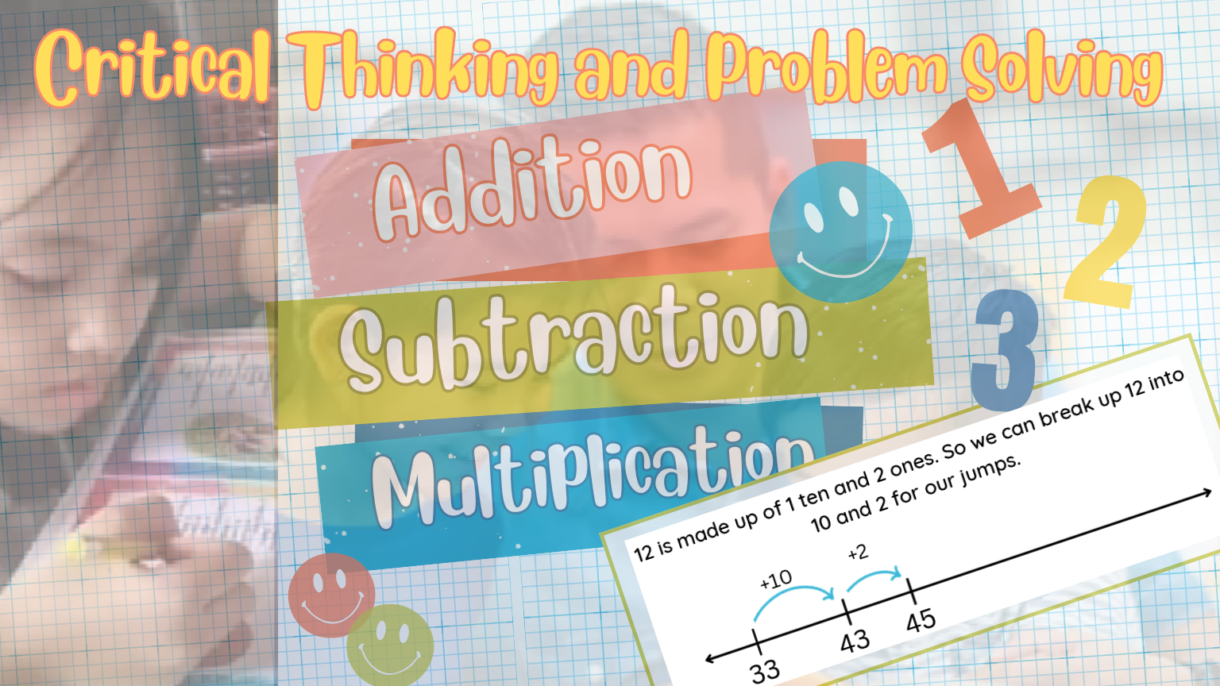
Critical Thinking and Problem Solving in Math
April 28, 2022
The topic given to me is critical thinking but I want to add problem-solving because critical thinking is really used to harness problem solving, so let us start with a problem.
You land a gig for three weeks and are given two options for payment:
Option A: You are paid P100 for the first day, P200 for the second, P300 for the third, and on and on up to 21 days. Each day, you are paid P100 more than the previous day.
Option B: You are paid P1 for the first day, P2 for the second, P4 for the third, also up to 21 days. Each day, you are paid double the amount of the prior day.
Which do you choose?
Because I only have 20 minutes, I won’t ask you to answer this. But if we had longer time, I would have asked you to solve this one and give me the answer. I often give this to my students. When the pandemic started, I decided that there be some Mathematics behind it. But this was in April 2020. We did not know much about the pandemic yet and people were quite scared. Of course, I used money because that is what most people want to know about. Pre-pandemic, almost all my students said they preferred Letter A. But after I asked them to get their hands dirty, which means they literally had to write down each amount and add them for 21 days, then they get a shock because this is what is going to happen:
Week 1, it is obvious that A trumps B. Week 2, though, B is more than A. Week 3, which is horrendous: 12,600 vs 2-M. In Mathematics, you call the first one linear growth. The second one is called exponential growth. Virus spread is exponential. It’s not linear. You can start with one person and you can get two million in Week 3. So that was my explanation. People did not know what it meant. That is one example of critical thinking and reasoning in Mathematics.
I will go straight to what researchers say. How do we develop critical thinking? I wanted to get researchers who are Asian. I share the bias of Fr. Ben Nebres. He says we should learn from our Asian neighbors more than those of the West, so most of my literature would be Asian—how Asians do critical thinking and problem-solving. Most important of all is you have to master basic skills. You can’t really do critical thinking without them. That’s what shocks me sometimes. I’ve attended so many conferences on critical thinking. They have lots and lots of nice Power Point terms and, basically, the kids can’t do anything because they lack the basic skills. This is the elephant in the room that people do not want to talk about.
You cannot be innovative if you don’t have the basic skills, and this is what people don’t like. Many of my students hate it. They immediately want to get into the razzle dazzle of Math but they can’t even do Arithmetic sometimes. But after you master basic skills, we emphasize reasoning logic validity. They can identify possible solutions, evaluating, justifying, allowing them to be critical thinkers.
Meta cognition in psychology is also becoming a fad. It is a good fad—thinking about thinking, number sense. An example of number sense would be this: I would get very, very disappointed, and I tell that to my students when they do not even think about whether their answers make sense. For instance, just in basic probability, you ask them if you have a deck of cards, what is the possibility that when you pick one card randomly from 52 cards in the deck, it would be a heart? Usually, the answer would be one fourth. Sometimes, they would say one-fifth, one-sixth, two-thirds, that is fine. But what really irks me, and I do tell them is sometimes, is I would get an answer of – 6.4. I say, “What the heck is that?” Especially if we define probability to be anywhere between zero—zero means it will never happen—or 1 which means it is certain to happen. The answer must be a positive number, except that zero is neither positive nor negative, so zero to one. So, one-third, one-half, two-thirds, .6. It’s fine. But -6.2 probability doesn’t even make sense so there’s no critical thinking or meta cognition involved.
I have talked to certain professors in the Ateneo. Fr. Jett has a Physics degree. One of them, Dr. Joel Maquiling, tells me the horror stories he gets when he poses (very basic for him) mechanics questions to students. When the answer is something like a hundred kilometers, he tells me he would get an answer of two million. And he would just laugh. How could it be two million? Can’t you think about the validity of what you’re saying. So, that’s also critical thinking. That afflicts also, by the way, adults. But no time to talk about that.
Critical thinking guides students to identify scenarios, evaluate, select problem-solving strategies (this alone is what Fr Nebres and I teach), identify possible conclusions (and see if they are logical), describe, summarize, and indicate how they can be applied to more advanced problems and to real life. Focused thinking, planning, and strategizing are key aspects of organizational success, decision-making, and making life choices.
Going back to basic skills and applying them. This is a poster done by Ningning Roble and Dr. Nene Guevarra. Recently, my son and I did a Singapore math workshop with a hundred thousand teachers across the country. And there was no way out. Rather than giving a lecture, we spent three Saturday mornings, went overtime for all of them. The only way to do problem solving is to get your hands dirty and really solve the problem rather than theorize about it. Many of the people who theorize are actually so scared of getting their hands dirty. So, I was quite impressed by the tenacity of many of the teachers. I remember one teacher was up on a tree and you guys called her to answer and waited patiently for her to come down from the tree to do the solution. That inspired me so much. I told this to my students and I said none of you are on a tree, so please do not tell us you don’t have Wi-Fi. So, if there’s a will, there’s a way and it is problem solving. This young teacher wanted to learn. She did not have Wi-Fi, so she climbed a tree. That’s problem-solving.
Synergeia is at the forefront of doing Math. This is Basic Math plus problem-solving. This is the Model method; this is what we did. This forum is hosted by Singapore, so you know what Singapore Math is. We took this from your curriculum. I had a chat with some of your LOE before and Marshall Cavendish, the one who published the biggest textbook on Singapore Math. We are using it in the Philippines, in many schools. It is called the Model Approach and it’s learning by doing. I’ll do one more problem because this one has an obvious answer. Be honest with what your immediate gut answer is.
A big burger and giant fries together cost P100. The burger costs P90 more than the fries. What are the cost of the burger and the cost of the fries? If we are honest with ourselves, most of the time, the gut answer is, the burger costs P90 and the fries cost P10. That’s almost always the gut answer and of course it’s not.
This can be easily done with Algebra and, believe it or not, I’ve given this to several groups, ranging from Ateneo Grade 2 (they have a Magis Class, Grade 2 Grade 3). Before the pandemic, I used to give talks to them. We have the college, all the way to the executives. The ones that cannot answer this were the adults, the CEOs. The ones who did the best were the middle school students, not the primary but the middle school. Grades 6, 7 students did so much better. College students were very scared because they did not want to make mistakes. which is so sad. When they were younger, they were so open. The executives were not scared of making mistakes, but they made mistakes. The answer is not 9 and 10. The real answer is 95 and 5. Easy. When you get to think of the problem for a while, it’s easy.
Life is not about living without problems. I am at the forefront of mental health, which is sapping a lot of my energy. I prefer to stay in Mathematics. My students tell me life is difficult. I tell them, well that’s life. And many of them try to escape–social media and all that stuff. Gaming. It’s really escapist. A little bit of social media, a little bit of gaming is not bad to de-stress but getting addicted to it is not solving problems.
George Polya is the father of mathematics problem-solving. You can only learn it by imitation and practice. These are his four steps: understand, make a plan, do the plan, look back. These are all the problem-solving strategies that we use. When Fr. Ben and I teach the class, we go through the examples of these in Step 2. We give problems, sometimes problems that we don’t even know the answer to. You call it non-routine problem-solving.
I don’t know if I still have time, but just to tell students that Math can be hip, this is a clip from Die Hard…
(shows movie clip)
This is an example of a very old Mathematics problem. If you have a three-liter container and a five-liter container, how do you get four liters from three and five? That is a very simplistic problem. The students love it. They get their hands dirty. This is one way of doing it—you fill it up first, minus, add subtract, another one would be this, etc. What we do because we want to stretch their thoughts, after getting their answer, which practically everybody gets, we would ask them to stretch it and ask, “What is the general pattern that you see?” Suppose you have 10 liters and 8 liters: how do you get nine? And we would ask the computer science people to do a program. We would ask the business people to do something. We would ask the Math people to use calculus, etc. etc. One small problem would lead us to lots and lots of bigger problems which, despite themselves, the students find interesting.
What do we need for critical thinking? Grit. People who are very impatient, who want instant gratification, who, if they don’t know something, immediately Google the answer cannot be critical thinkers. The definition, mali na. It’s wrong. It can’t be done. Angela Duckworth defines grit as very long-term goals. Not just for the week, but for years. Life is a marathon and not a sprint and in my Positive Psych class, we talk about Carol Dweck’s fixed and growth mindsets wherein I really embrace challenges instead of avoiding them, persevere instead of giving up, and what I would really like to enjoin if there is a way, Konrad Adenauer, Synergeia, I myself and several other science teachers—Ateneo’s School of Science and Engineering (SOSE), finished a resilience study because, in the pandemic, we are not too happy with the resilience of several students yet we were very happy with the grit of some. So we wanted to see.
For science, you really need grit because there is no way you can do fast science. We were not very happy when several students run from error, when they ignore negative feedback. You give them feedback and they get mad, they cry, they avoid new experiences. The students tell it this way: they don’t really trust each other. Rather than friends, they have frenemies so they are really threatened if somebody else is successful.
We did a study on what makes our science students gritty. The Asian value would be: faith is there to my surprise. Many of the gritty students say they really find comfort and strength in faith. Which is not a Western finding. I was very shocked by that. Faith and, of course, being Filipinos, family is such a support. That one didn’t come out in Western literature, and friends who hold them accountable. This is all part and parcel of critical thinking, especially the second part. And cheating is rampant, not just in our country but world-wide. I was talking to a Western educator. Googling is not learning They Google the meaning of their lives. Which is so sad. A series of problems either defeat you or develop you depending on how you respond to it. And that’s it. Thank you.
Source: Synergeia

Building an Education Community: The Lambunao Experience
“As a public servant and Mayor of Lambunao, I work to upgrade the quality of education in our public school through personally implementing teacher training program and as a member of the school board, to support the funding of similar programs aimed at improving teaching quality. My aim is to create the best municipal public school system in the province of Iloilo.” – Mayor Jason Rivera Gonzales
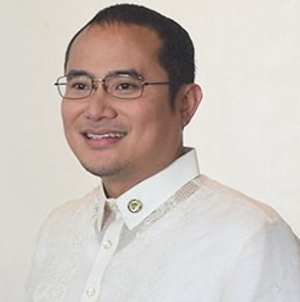
A promising young and brilliant leader, Jason Gonzales, Iloilo’s councilor, was tapped by Ma’am Nene to join Synergeia’s poll of mentors in 2014. Paired with Tonton Toralba, Synergeia’s Vice Chair in his maiden role as a mentor, the duo was an instant hit. They mesmerized their audience composed of school heads as they deftly facilitated the discussions on problem tree analysis, listening exercise, SWOT analysis, building alliances and many more topics. Mr. Gonzales worked smoothly with seasoned Synergeia mentors in various activities in Iloilo. It was in one of Synergeia’s regional workshops that Mr. Gonzales announced his plan to run for mayor in his hometown, Lambunao. He won handily in the 2016 national elections.
Upon assumption into office, Mayor Jason Gonzales immediately buckled down to work. Serving the largest municipality in the Province of Iloilo in terms of land area, it was quite a challenge to create a sustainable program for education with only P2.1 million Special Education Fund to budget for the needs of 55 public elementary and 4 high schools. When he went over the school data, he was aghast to see that out of 9,300 elementary pupils, almost 50 percent were frustrated readers and 600 were non-readers. He convened his Local School Board and proposed to realign some budget originally intended for sports but he was opposed by the DepEd.
Unfazed by the initial opposition by education officials, Mayor Gonzales put into action his plan to build an education community. He created a Project Management Team for Education. He personally recruited young, dynamic, creative and committed staff who were willing to go the extra mile to learn the ins and outs of government bureaucracy. With substantial knowledge he learned from Synergeia as a mentor, Mayor Gonzales painstakingly reached out to various education stakeholders. He dialogue with school heads, parent leaders, business sector, civic clubs and other foundations presenting his priority development agenda.
Tapping the assistance of Synergeia, he planned the holding of the First Municipal Education Summit in February 2017. Facilitators for the summit workshop were trained while Deped prepared the assessment survey on the state of public education in Lambunao in simple and easy to understand language and presentation. Mayor Gonzales considered the summit the launching pad of his education program where he would challenge the whole community of Lambunao to join hands to help solve the education crisis.
To impress upon his constituents the seriousness of his purpose, Mayor Gonzales chose the Iloilo Convention Plaza as the venue for the event, an iconic hall which was one of the venues of the 2015 APEC Summit. Close to a thousand participants trooped to the Iloilo Convention Plaza composed of parents, teachers, businessmen, farmers, religious leaders and government officials. They were excited to step into the convention hall and took selfies before the start of the summit. Former DepEd Secretary Armin Luistro was the guest of honor.
Using the “shock and awe” presentation technique, summit participants learned how children performed in school. Around 16 high school students remained non-readers. This shocked many of the parents and other stakeholders. During the workshops, the participants expressed their views on important issues such as training of teachers, active participation of parents in school activities and how to spend public funds judiciously. The output of the summit was an Agenda for Action that identified the following priorities: (1) teachers training, (2) organizing of the School Governing Council(SGC) in every school to assist in the implementation of the School Improvement Plan, and (3) developing coalitions and partnership to improve school governance.
The summit gave birth to the Teachers for Lambunao (TFL), a movement of teachers that champions the principles of effective education. Mayor Gonzales impressed upon his teachers that to be a champion teacher, one must possess 7 characteristics: be a creative thinker, be a critical thinker, reflective, communicative, collaborative and caring. He provided training to all the teachers with the help of Synergeia and another foundation, Mentoring the Mentors. He lobbied with the provincial government for assistance and in 2017, the Iloilo Provincial School Board (PSB) in partnership with Synergeia provided workbooks for pupils and handbooks for teachers as part of the Provincial School Board Reading Proficiency Program. Mayor Gonzales together with his Local School Board appropriated additional funds to reproduce the workbooks given by the PSB to ensure that all the public school children in Lambunao from Grades 1 to 3 have copies of the workbooks. Since then, the Lambunao LSB took the driver’s seat in pushing for the improvement in basic education. In 2018, it was assessed by Synergeia to be fully functional with a rating of 5 from a baseline of 2.9 in 2016.
Latest Phil-Iri test results in one district showed that out of 955 pupils from Grades 4 to 6 classified under frustration level during the pretest showed promising results after the posttest. Only 181 pupils remained in the frustration level while instructional readers increased to 438 and independent readers jumped to 336 pupils. The primary reasons were the presence of highly motivated teachers and the active involvement of the School Governing Council. Actual assessment of all the schools in Lambunao showed that their SGS are organized and actively helping the schools especially in the drafting of the School Improvement Plan. Parents’ training also helped. Parent leaders from every school were provided with Nanay-Tatay Parents Training.
Moreover, Mayor Jason personally pushed for the Meditation in School Project (MISP). It’s a two-minute breathing exercise for the pupils before the start of classes in order to improve the pupils’ attention and participation. A study conducted among 493 pupils in 6 schools in Lambunao showed that MISP attained this objective. The study further showed that impulsiveness of behavior was drastically reduced by meditation. Homeroom teachers who are practicing MISP have these to say,
“It sets the mind of every pupil to be attentive in the class discussion.”
“A particular pupil used to be very talkative inside the classroom but now he participates and is more attentive in class”
“It lessens the stress of teachers and as I practice it myself, I can fell that my patience had become longer compared before”
Mayor Gonzales recalled how difficult the task of pushing education reform and improving education governance was at the start. But with enough dedication and patience and involving all the stakeholders along the way, the challenges become less difficult. Mayor Gonzales said that everything becomes a beautiful challenge. For striving to do their best for the education of Lambunao children, the LGU has been a consistent recipient of the much coveted Seal of Good Education Governance Award.
Mayor Gonzales, who is now a Board Member of the Iloilo Provincial Government, lends his leadership, passion and commitment to education governance reform to the Visayas Regional Education Council which he chairs. BM Gonzales has initiated a mental health care program for the youth to help them cope with the stress of the pandemic and the new normal way of living and studying.
Source: Synergeia
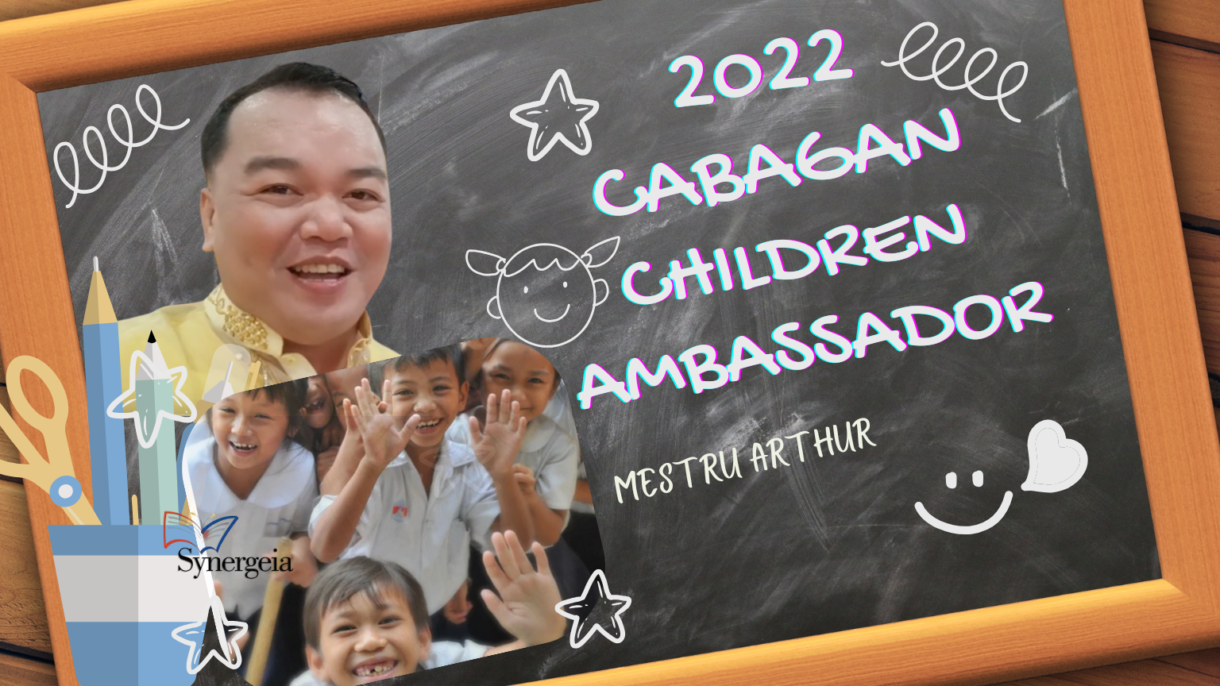
Maestro Arthur: A teacher’s vlogging hobby becomes a passion project

By Malio Aguilar
It takes him up to a week to make a video that lasts less than 20 minutes, but 38-year old teacher Arthur Datul thinks it’s a small price to pay for something that will benefit his students.
Datul, from Cabagan, Isabela, began his own YouTube channel called “Mestru Arthur” in 2019, posting mostly personal videos. But the pandemic that began last year which barred in-person learning prompted him to focus on producing educational videos for the Grade 8 and 10 students in his World History and Social Studies classes in Delfin Albano High School.
His first one, where he discussed world history for Grade 8 students, was shared by his fellow teachers in their respective classes and racked up nearly 50,000 views on YouTube. It inspired him to create more educational content, and he has made several video lessons since then on world history and social studies.
“I wanted to help and inspire my students since there are no face-to-face classes,” he says. “I’m just overwhelmed by the response I got.”
The videos were meant to supplement the self-learning modules of his students. He monitors them daily through their Facebook chat group by sending them messages about their learning progress.
His success as a vlogger caught the attention of TV Eskwela, a program produced by the Department of Education where teachers discuss lessons on air as the COVID-19 pandemic closed schools across the country, forcing learners to study from their homes.
He was invited to give a video lesson in Social Studies, putting him back in a familiar ground, having previously worked for a similar educational broadcasting service called Radyo Eskwela where he was a scriptwriter, voice talent and content editor.
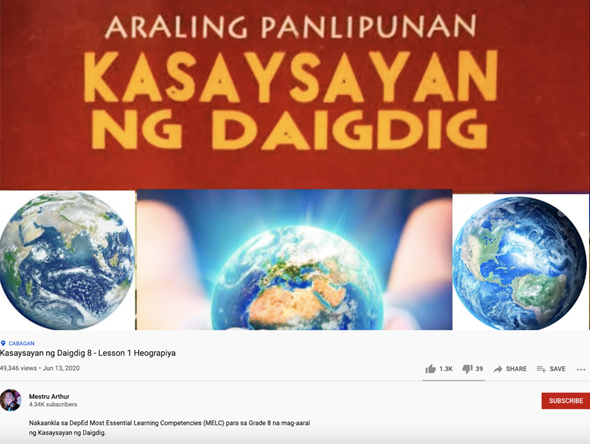
Great cause
Datul has been teaching for six years now. Before that, he worked overseas for eight years, taking up non-teaching jobs in Dubai and Taiwan.
Apart from being a full-time teacher and a part-time vlogger, he is working on a doctorate degree in Educational Management at the Cagayan State University Andrews Campus in Tuguegarao City.
He is also the breadwinner in the family, and helps raise his nieces and nephews who live with him in the same house he shares with his siblings and parents and who feature in his fun videos every now and then.
Despite finding success as a vlogger, Datul says it’s more of a passion project for him. “I will keep on making inspirational videos for my students, for my school and for my community,” he said. “It’s a priceless feeling to know that somebody appreciates your effort.”
Datul has been active in his community even before he became a content creator, hosting events in school and in the local government. He says his videos are also aimed at raising awareness for both learners and community members at a time of great uncertainty.
Cabagan is among the 421 local government units that Synergeia Foundation works with to lift the quality of basic education in the Philippines, in partnership with the United States Agency for International Development and the United Nations Children’s Fund with support from the Government of Japan.
Datul said his relationship with Synergeia began during the pandemic when he was invited in a virtual meeting with the local government.
“I have a lot of plans in mind on how I can make an impact in the education of our Cabagan learners and stakeholders. I am very thankful that I am part of this great cause,” he said.
“I will keep on inspiring and honing young minds the best way I could. And I am grateful that through Synergeia and the strong support from our local government, I was able to build a stronger and wider connection with others,” he added.
Source: Synergeia





